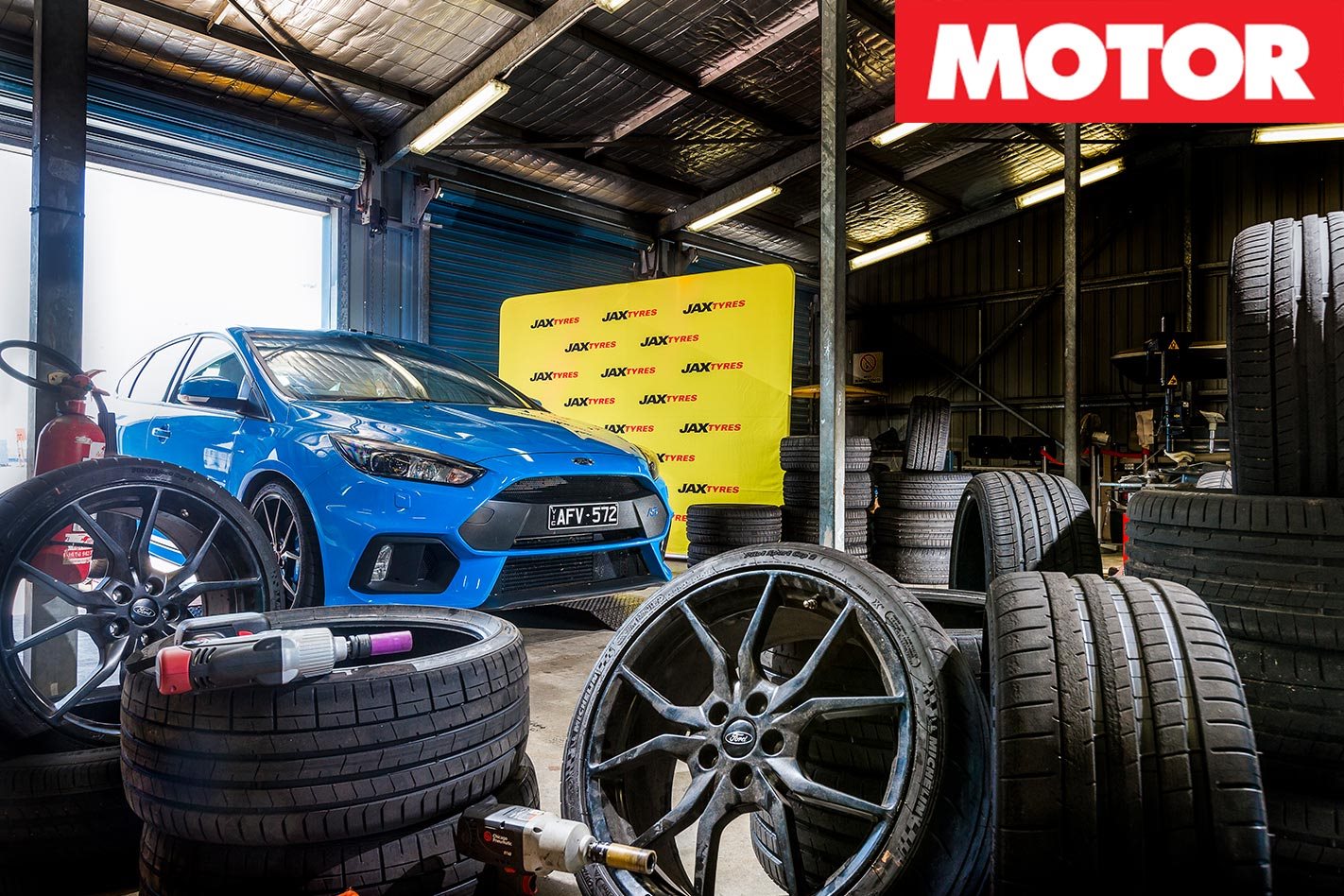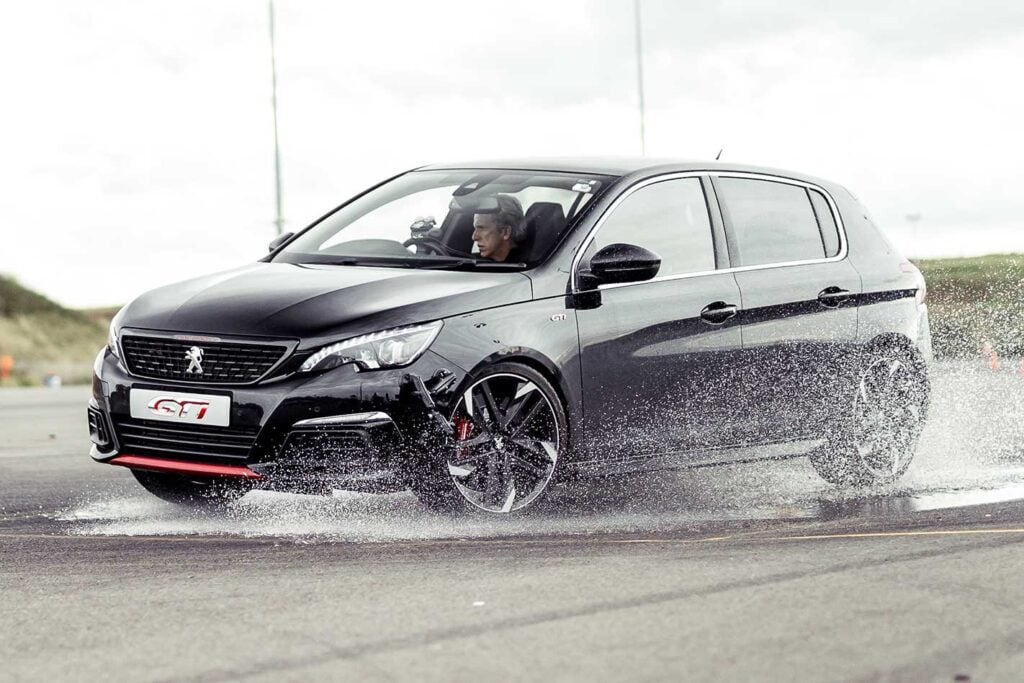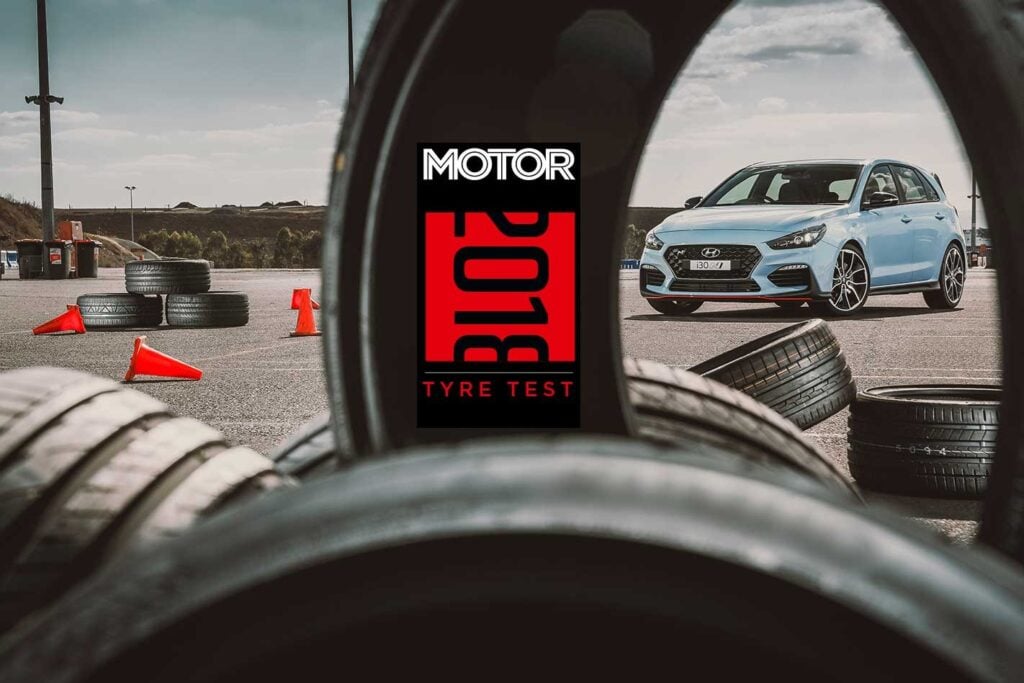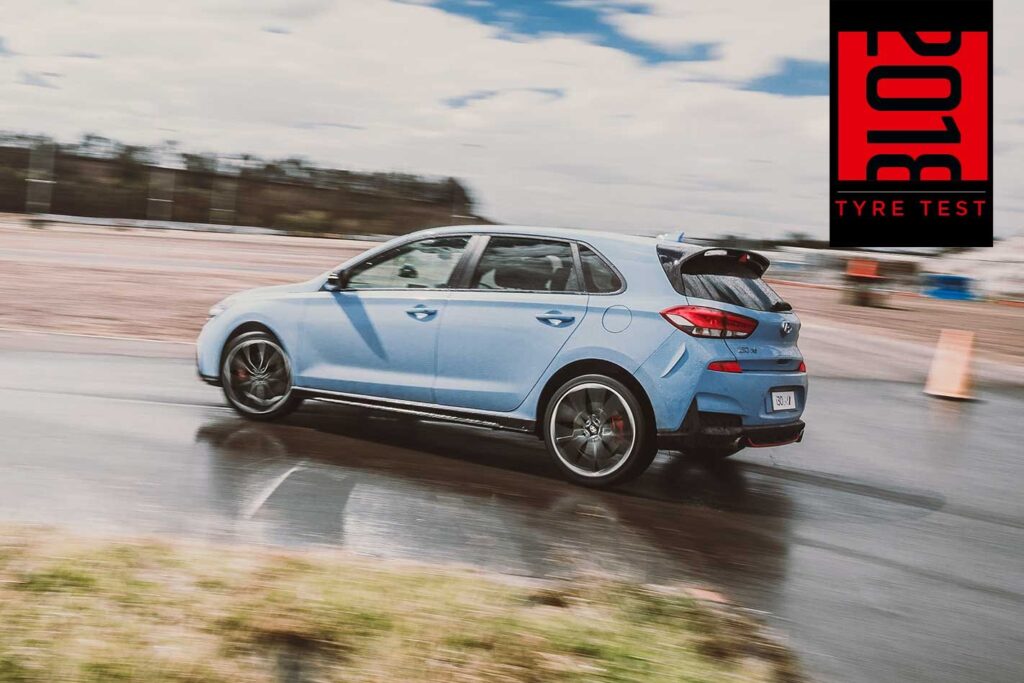One of the more irritating and puzzling decisions anyone has to make in their automotive lives is knowing which set of tyres to pick.
Adding a new set of performance tyres is also the best way to improve all facets of your pride and joy’s dynamics – or make them worse.
From braking and acceleration to mid-corner grip and even wet-weather performance, picking the right rubber is an incredibly important call to get right.
Luckily for you, your mates at MOTOR have done all the hard work to help you make an informed choice about your next set of boots.
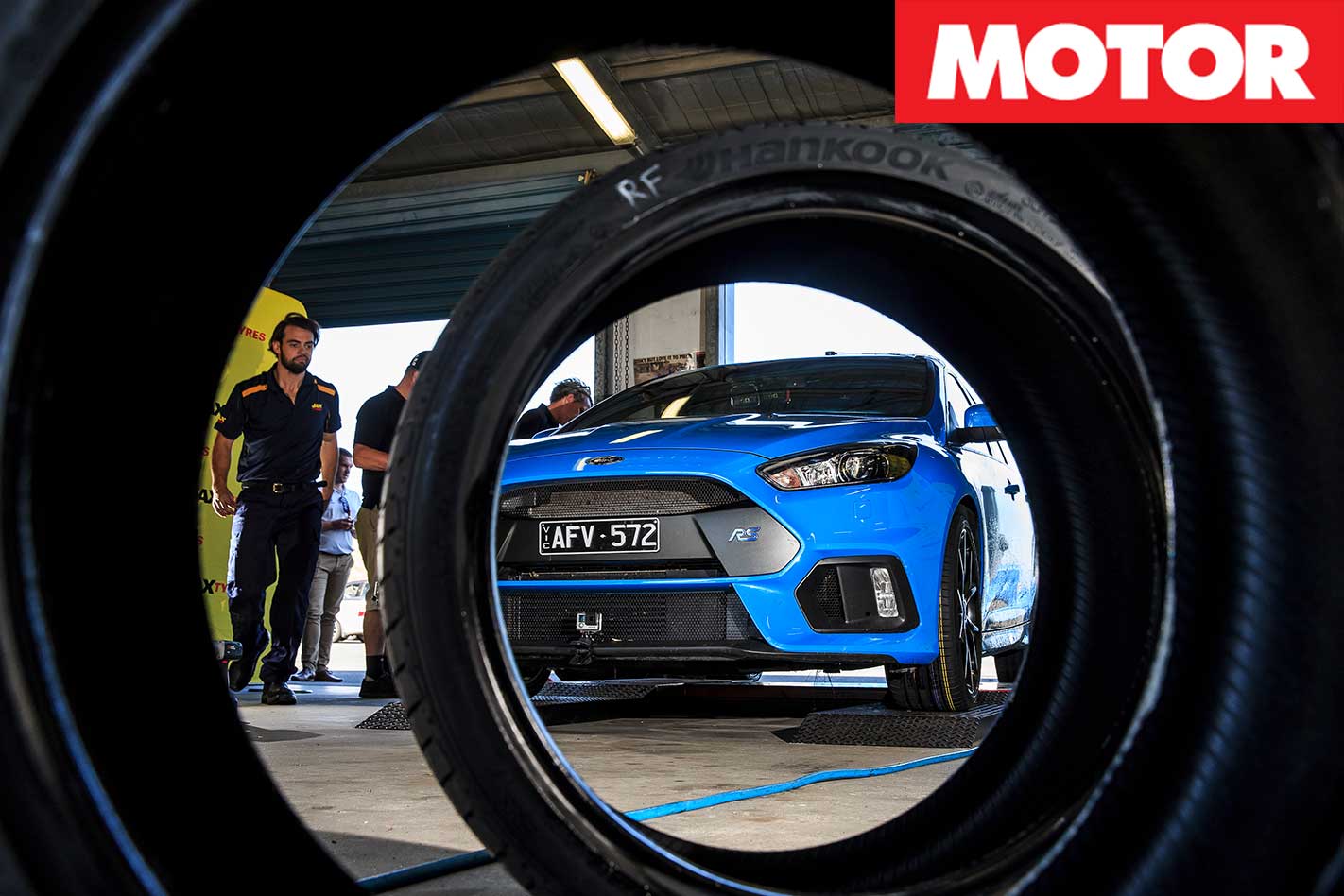
We’ve headed back to Sydney Dragway and set up a battery of tests in and around the facility’s proper tarmac roads to really assess each of our nine sets of test tyres.
We’re bolting them all to a Ford Focus RS, which has the punch and dynamics to really eke the most out of the rubber in the shortest time, and we’re plugging in our own Supercars racer – and ridiculously experienced road-car wrangler – Warren Luff to do the hard yards behind the wheel.
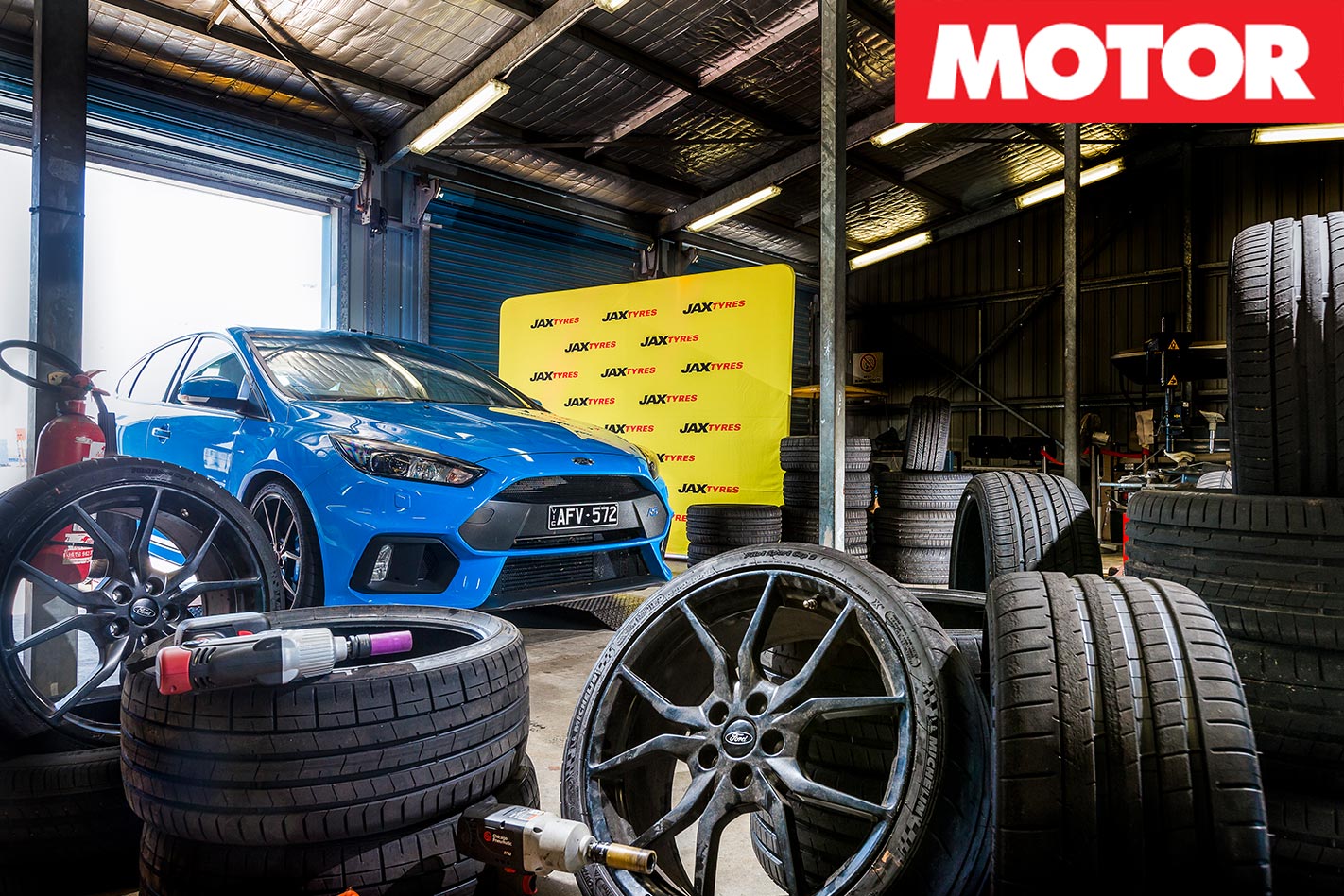
The defending champion Dunlop is back for 2017, and it’ll be kept honest by other premium tyre makers like Michelin, Dunlop, Continental, Pirelli and Goodyear.
Maxxis, Hankook, Nexen and Kumho are in the mix, too, providing a spread of talent and budget to help you gain the ammo to make an informed choice.
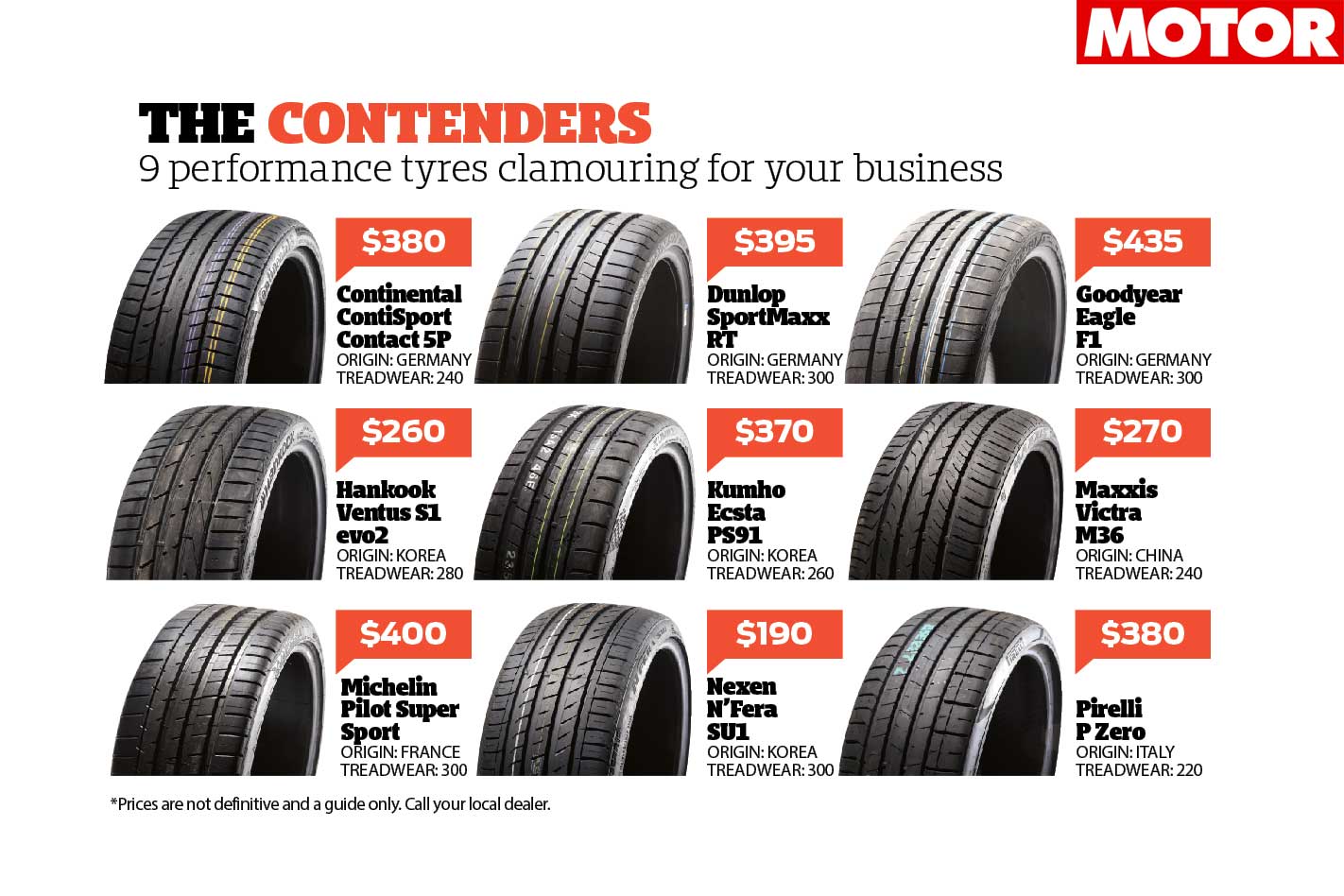
All data was recorded on RaceLogic gear, complete with a duplicate back-up system to eliminate inaccuracies.
On hand once again to facilitate the slightly mind-bending tasking of getting through 40 tyres in a day will be the team from JAX Tyres, who bring not only good humour and large, business-looking Eagle SMF machines, but a wealth of insight and knowledge from inside the tyre game that isn’t matched anywhere else.
Oh, and the crew has worked with us before and know how hopeless we are at anything vaguely mechanical.
DRY SLALOM

Lateral recovery is key as well, while sidewalls, shoulders and tread face patterns are equally under the spotlight.
Nine equally placed cones are approached at a V-Box-measured speed of 50km/h, and Luffy takes each tyre set through five times before discarding the best and worst scores and averaging out the remaining three.
The manual RS is left in second gear for the duration of the runs, and its swag of traction and stability modes are turned all the way off, which is a nice feature to have when you’re testing the limits of adhesion.
It’s the first batch of tests which tell us that perhaps things are going to be a little different this year.
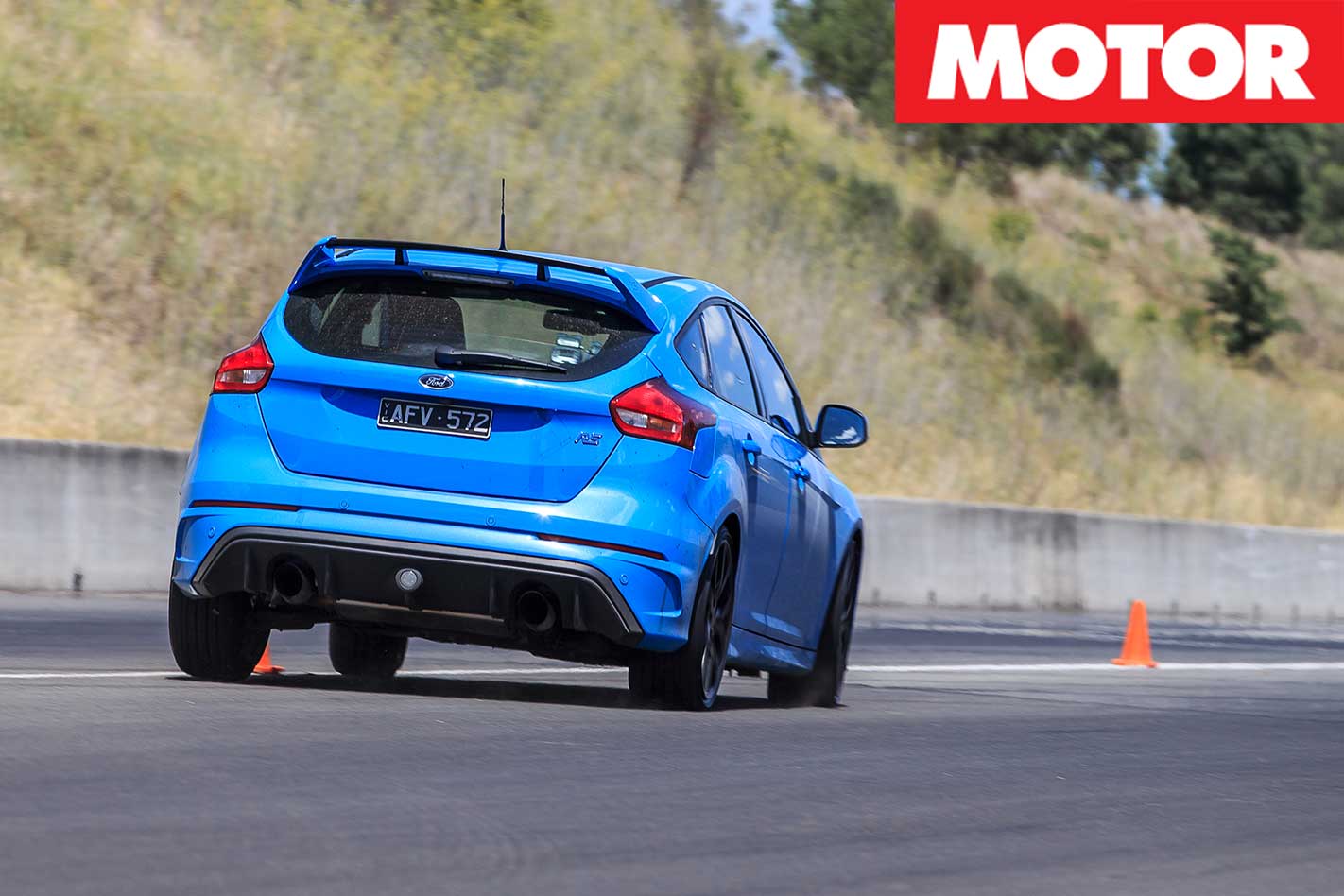
The performances of the Pirelli and the Continental means that the Europeans sweep the slalom podium. The Hankook is fourth – continuing its strong form from 2016 – and finishes just a tenth of a second ahead of fellow Korean brand Kumho.
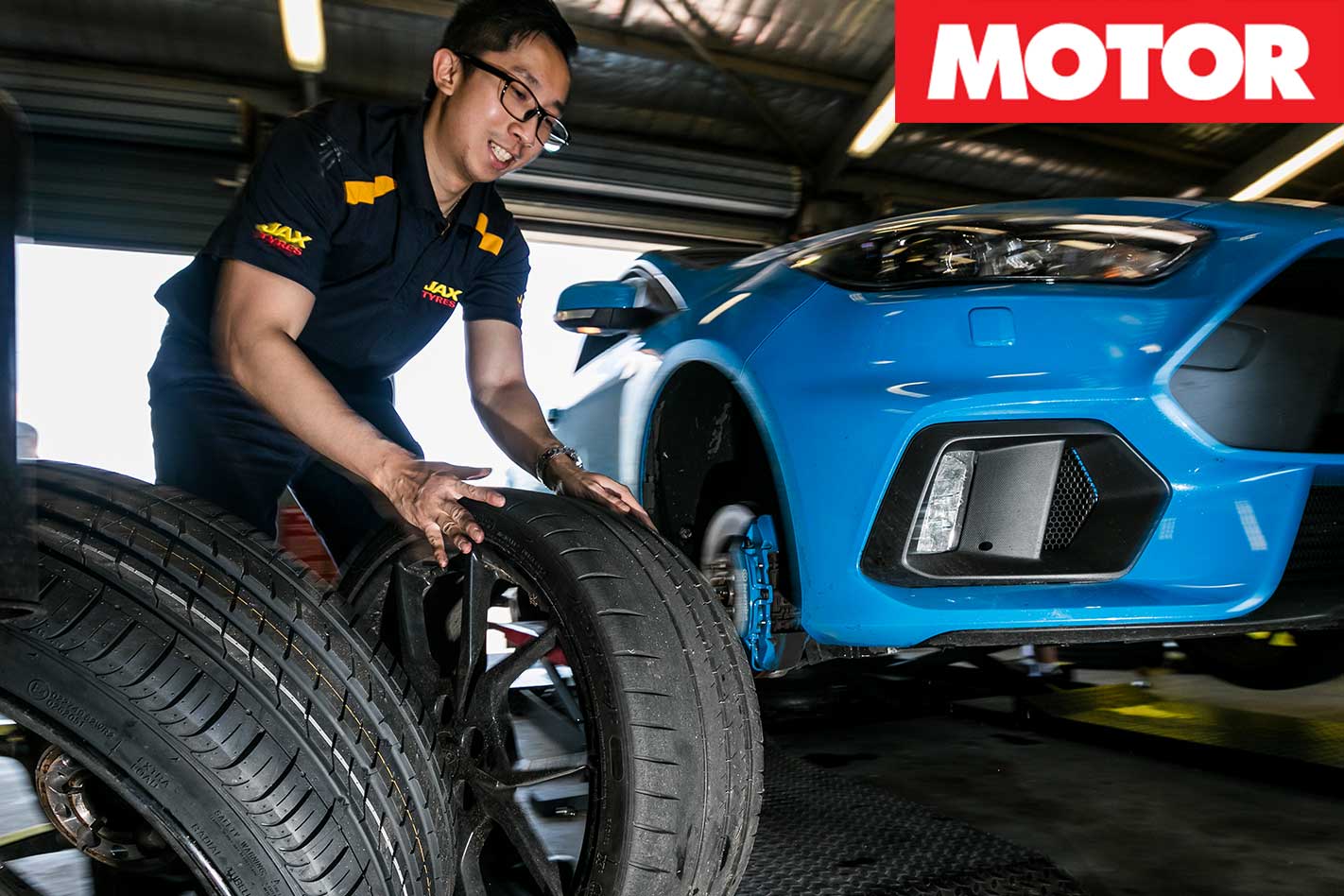
Track surface temps were getting up toward 38 degrees when the Eagles were bolted on, but the almost-identical performance of the Maxxis was achieved at 9am in the morning with vastly different conditions given the 24-degree track temps.
And this is why we run a control tyre at three points throughout the day: there was just one-sixteenth of a second difference between first thing in the morning and last thing in the afternoon.
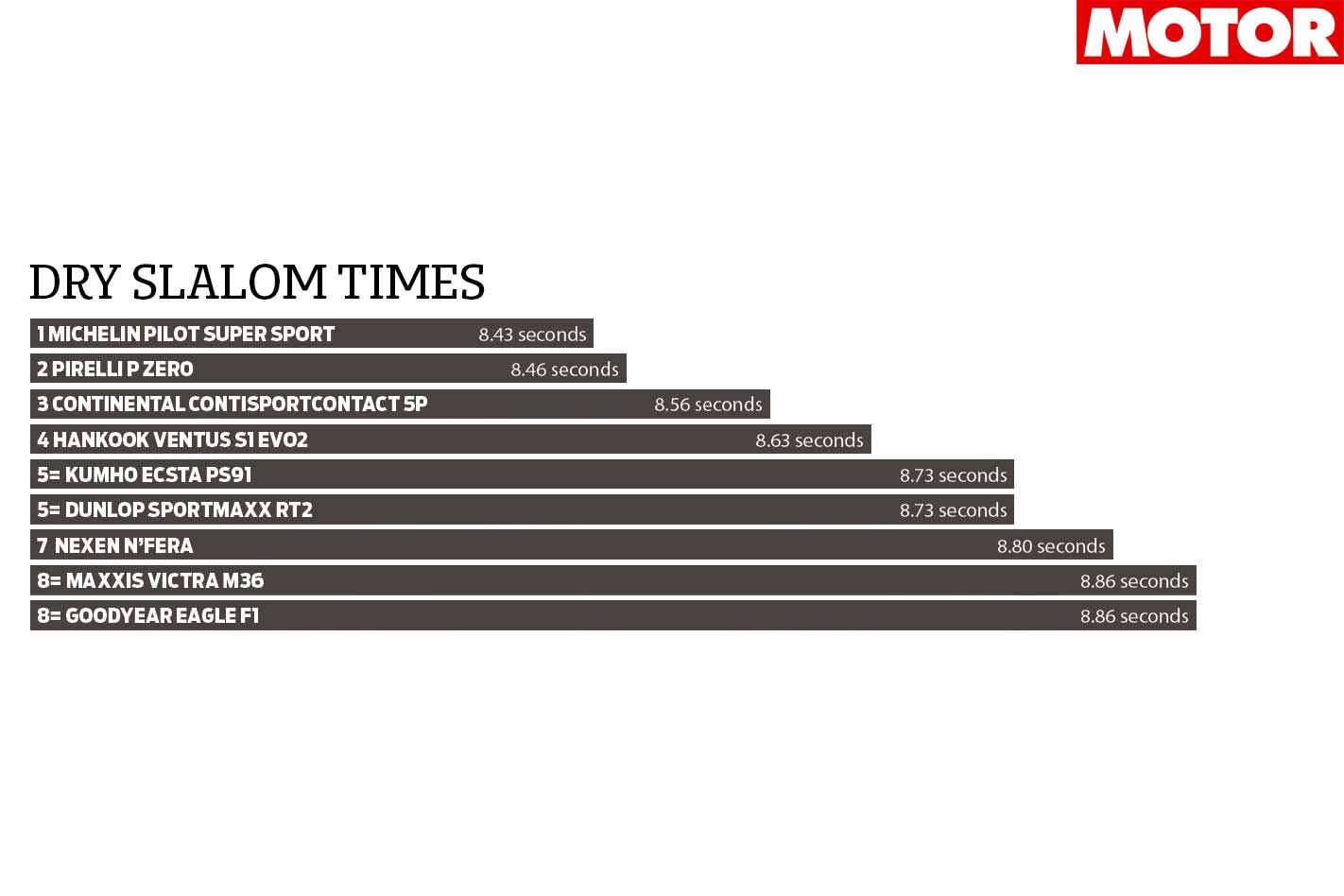
DRY BRAKING
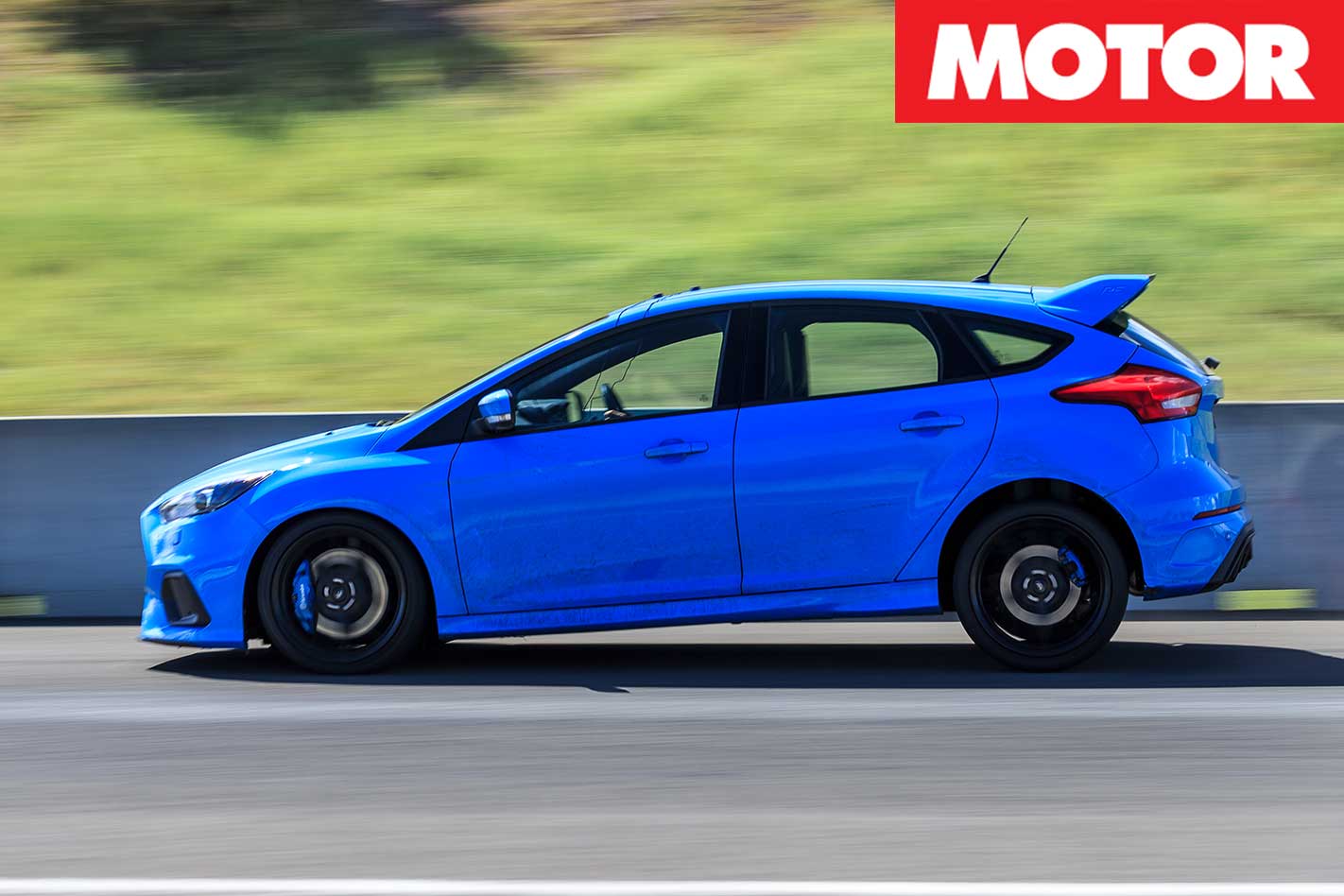
Held on the same section of tarmac track as the slalom – in fact, in between each run of the slalom to ensure that a series of back-to-back stops didn’t cause the Focus RS’s brakes to fade prematurely – the dry braking component sees our fearless hero line up the braking marker at a real-world speed of 110km/h before wailing on the middle pedal and allowing the RS’s four-piston Brembos and the car’s brake-force distribution to do its best to rein it all in.
Three runs are measured by the trusty V-Box, and are averaged out to provide a distance-to-zero score.
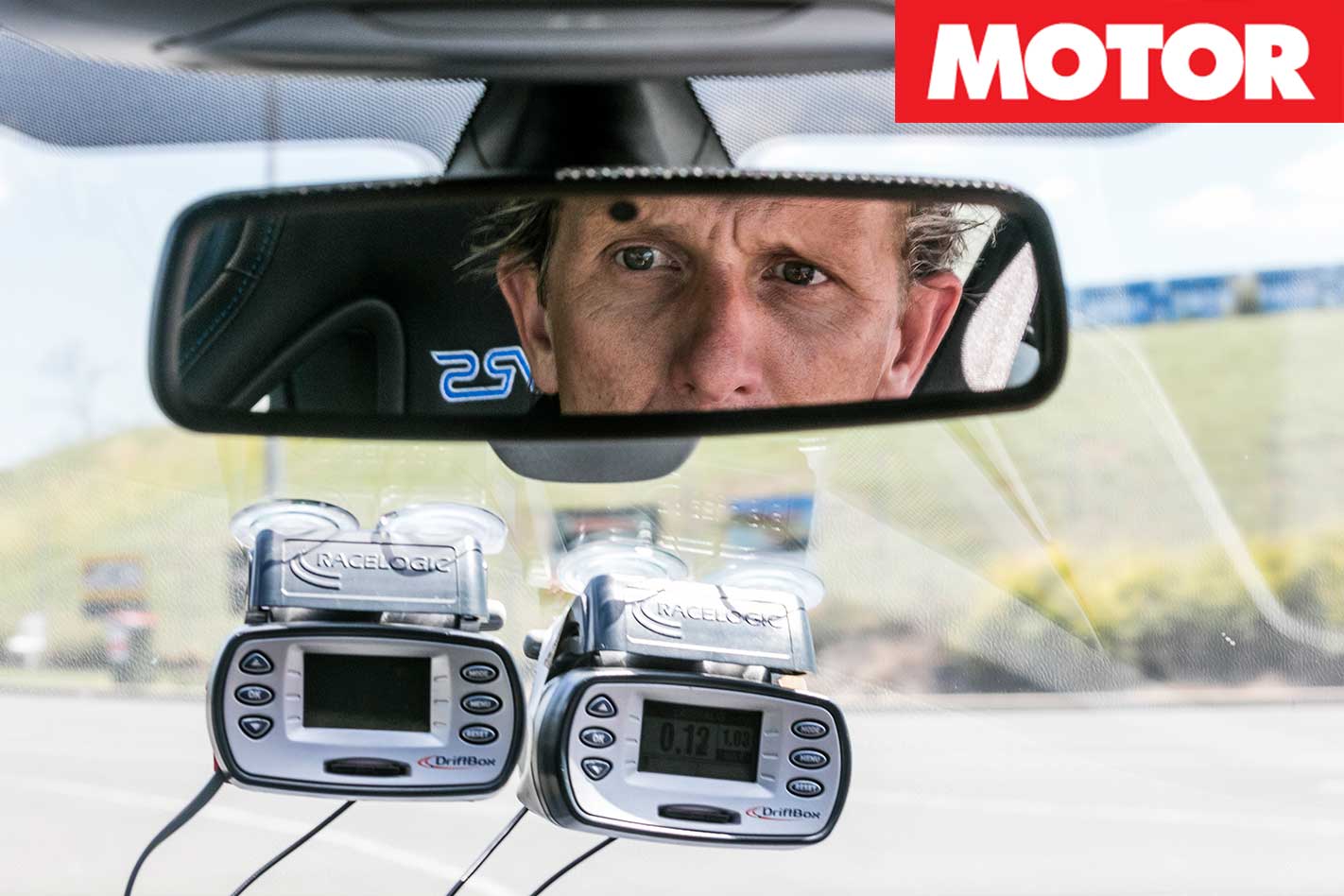
The win goes to the ContiSportContact 5P, pulling up to an ABS-assisted halt in 35.73m, with the Michelin 60cm behind it in second place. It’s another good result for the Conti, after claiming second inthe dry slalom test, while the Michelin adds a silver to its slalom gold.
The third-placed tyre – a great result for the Kumho Ecsta after a mid-pack performance in the slalom – is two metres behind the top-placed Continental, while the P Zero is 40cm further in arrears.
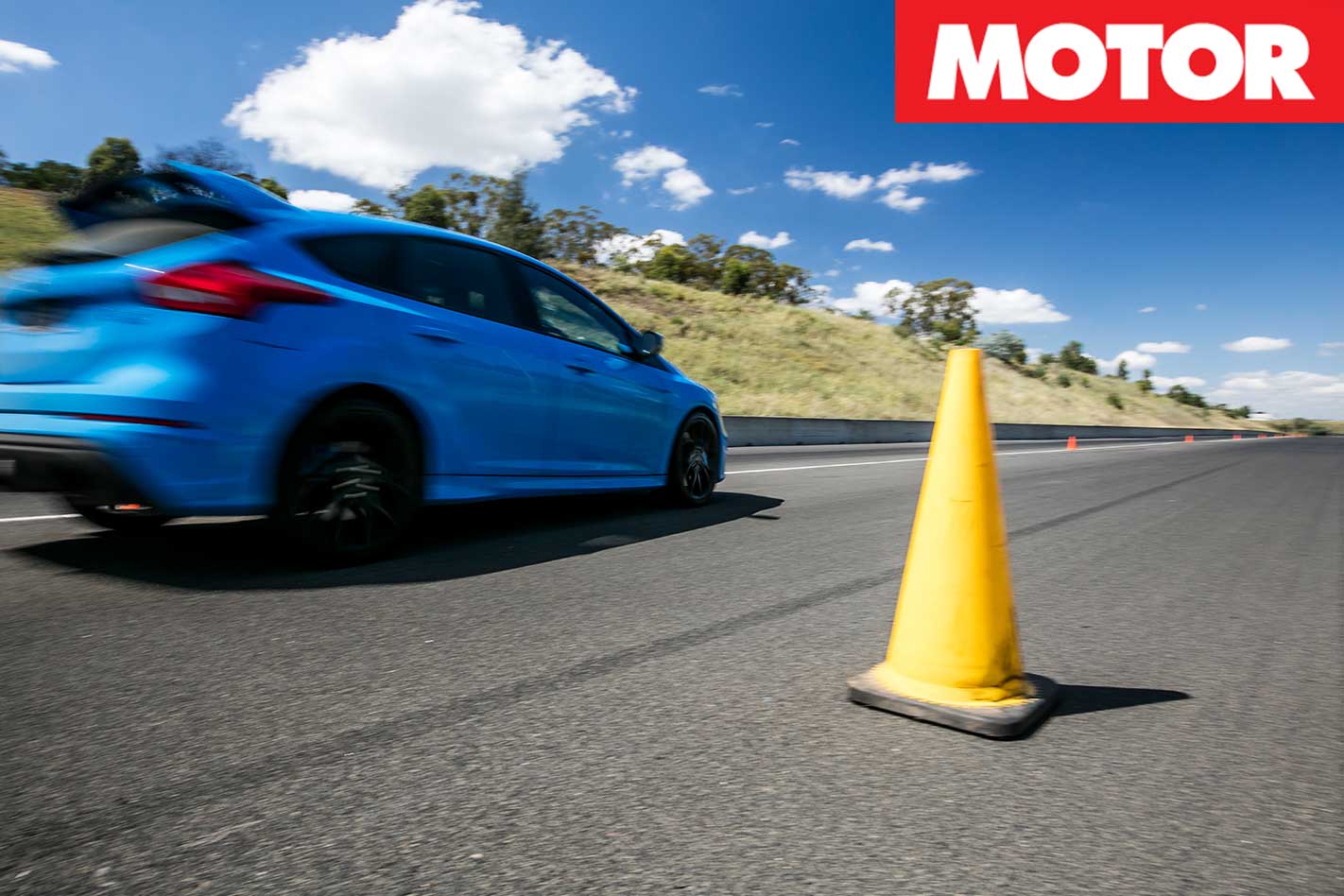
Both the Sport Maxx and the Eagle F1 finish their three runs in the 38m bracket, while the last-placed Maxxis stopped the tape 3.7m behind the best performer with a 39.31m stop.
At the bottom of the chart is the budget Nexen, which takes 41.36m – or 5.63m more – to come to a complete stop. “It feels very hard,” says Luffy, who adds that more delicate inputs work better for it – and a full ABS stop is not a delicate input…
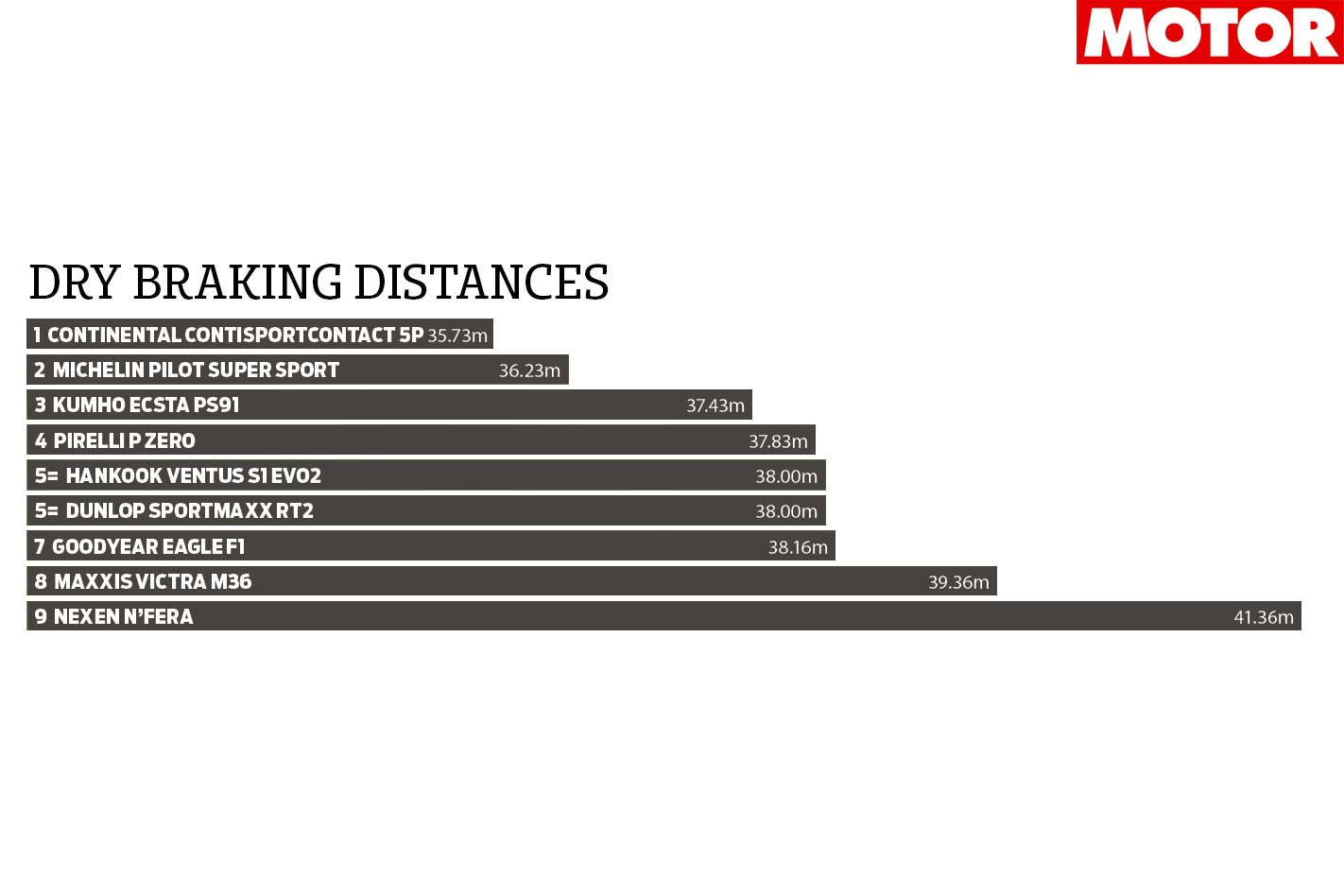
DRY MOTORKHANA
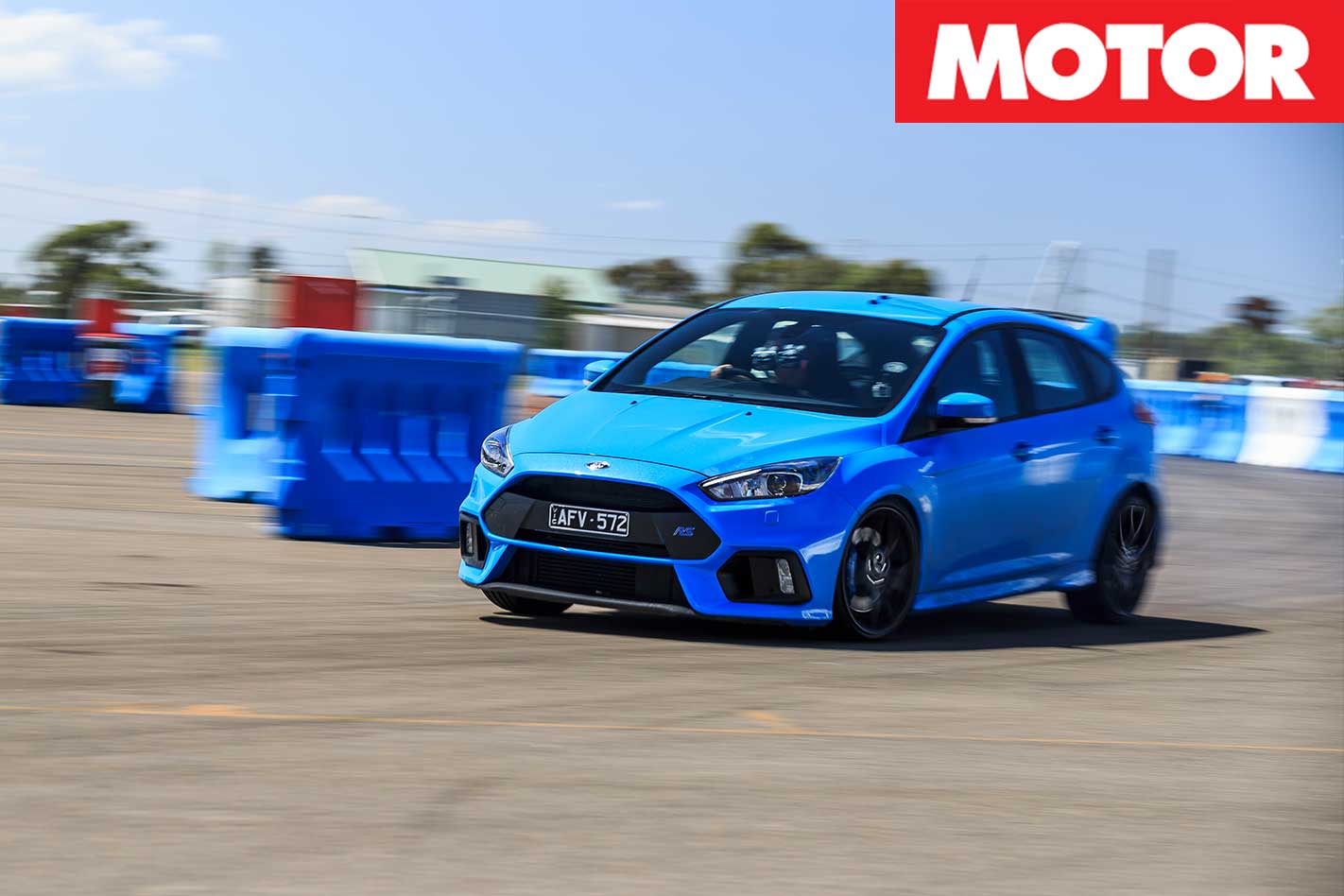
Our motorkhana course – laid out in the western corner of Sydney Dragway’s vast car park – comprises seven tight radius turns connecting a short, yet quick straight, a fast S-bend, and a short start/finish chute that morphs into a sweeping right.
After a rolling start, the stopwatch is triggered at the start/finish line, three laps are recorded, and the totals are added together. The Focus stays in second gear only again and all driver aids are switched all the way off to get rid of any variances that digital interference may trigger along the way.
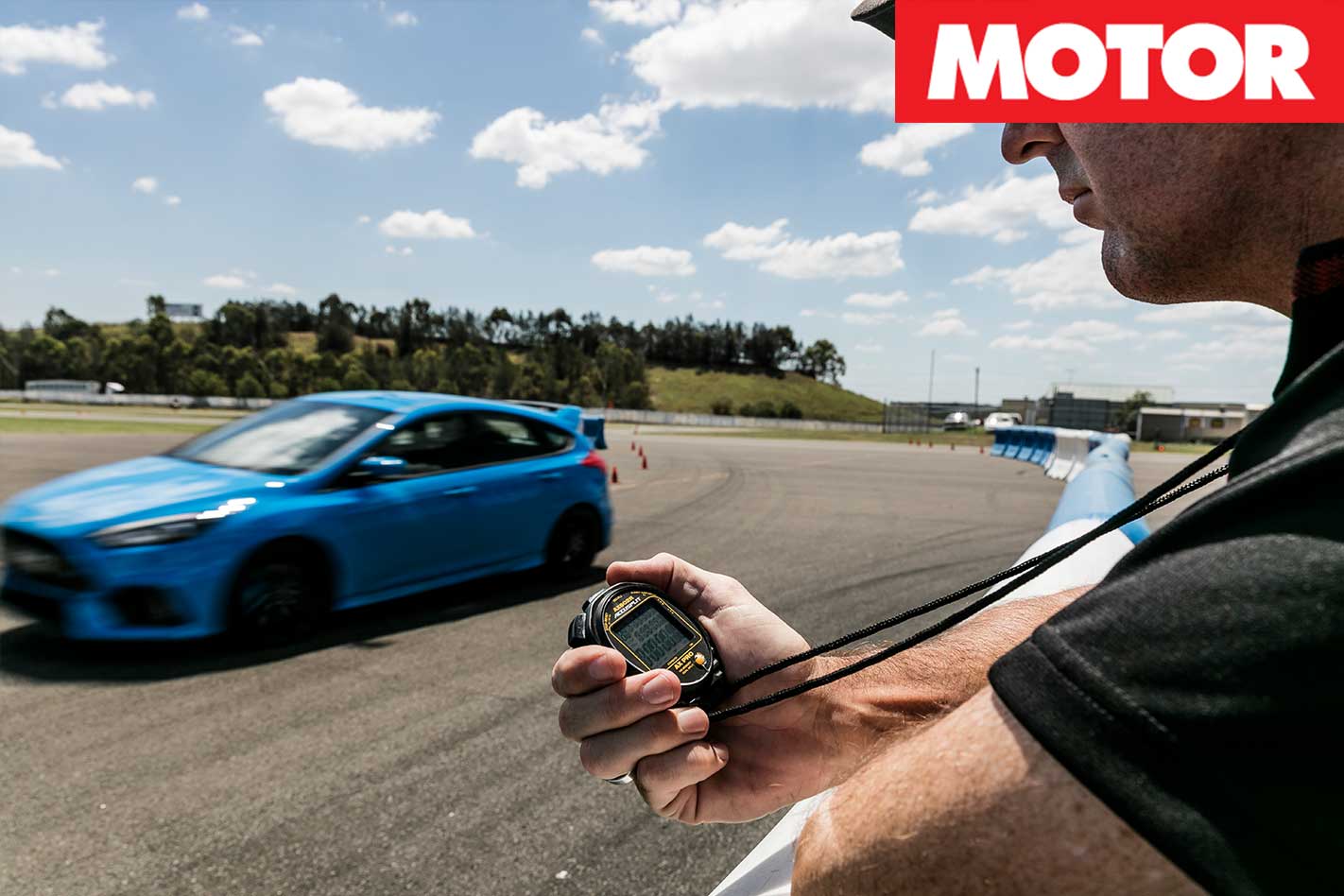
Watching the Luffster in action, it’s hard not to take an extra step back from the water barriers as he hustles the Focus RS around the short, tight track – but his metronomic precision lap after lap is almost impossible not to watch.
It’s also interesting to see how the car and driver react to each set of tyres, as Luffy works each corner to get the best from the set without overstepping the mark and compromising the result. And his consistency is why we call him first each year when locking down a driver for our test.
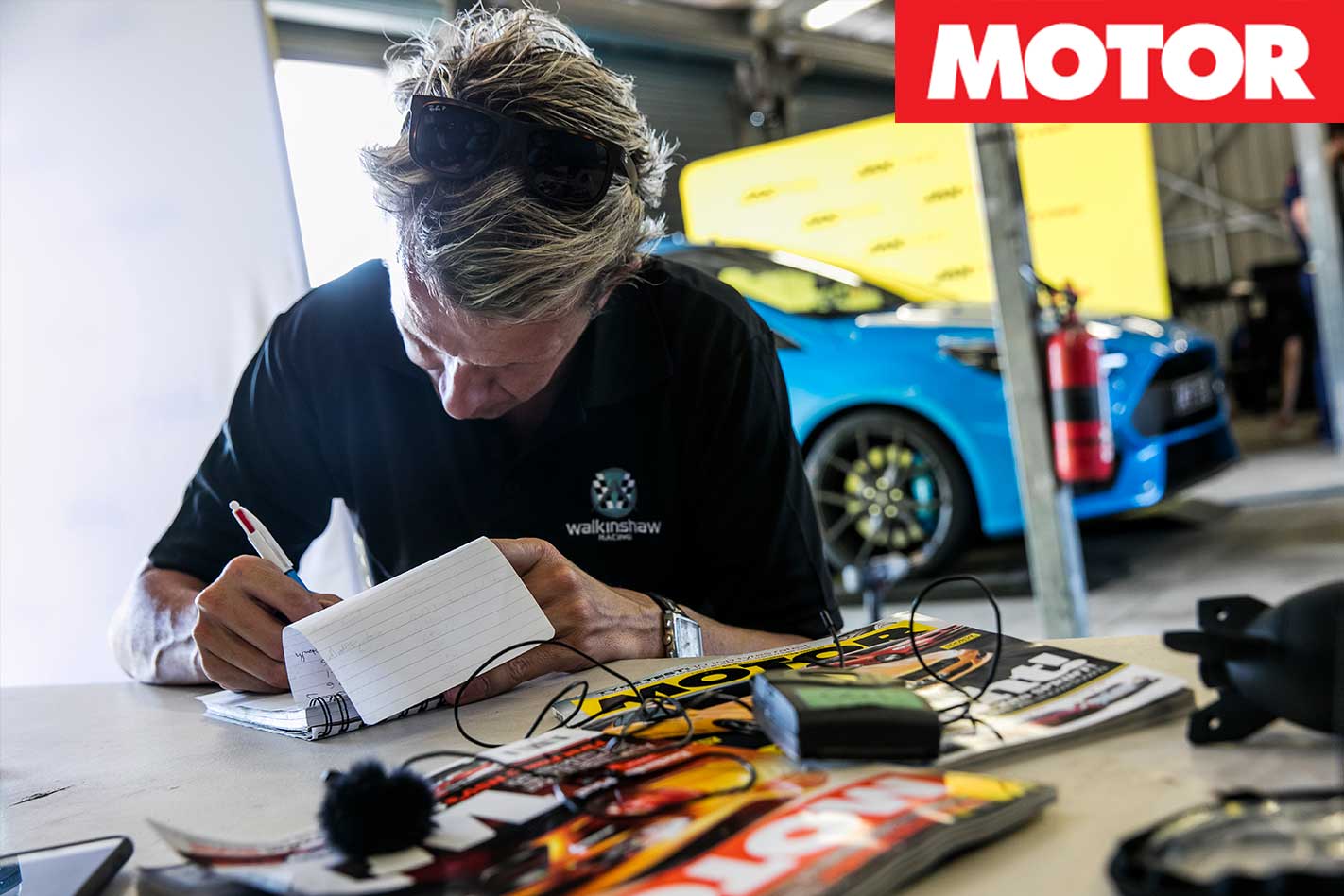
The Kumho pulls off another giant tamer performance, sitting three-tenths back in third with a 1min 18.7sec, with the Pirelli another two-tenths back in fourth.
Hankook’s Ventus’s fifth place again keeps it ahead of its more fancied rivals from Goodyear and Dunlop, while the Nexen falls a long way back here. A 1min 22.7sec run is 4.3sec off the pace, which in this company is a long way.
“The Michelin recovers between transitions so quickly, and the Contis combine consistency with a lively feel,” reckons Luffy. He’s not as kind about the Nexens. “The stopwatch tells the story,” he says.
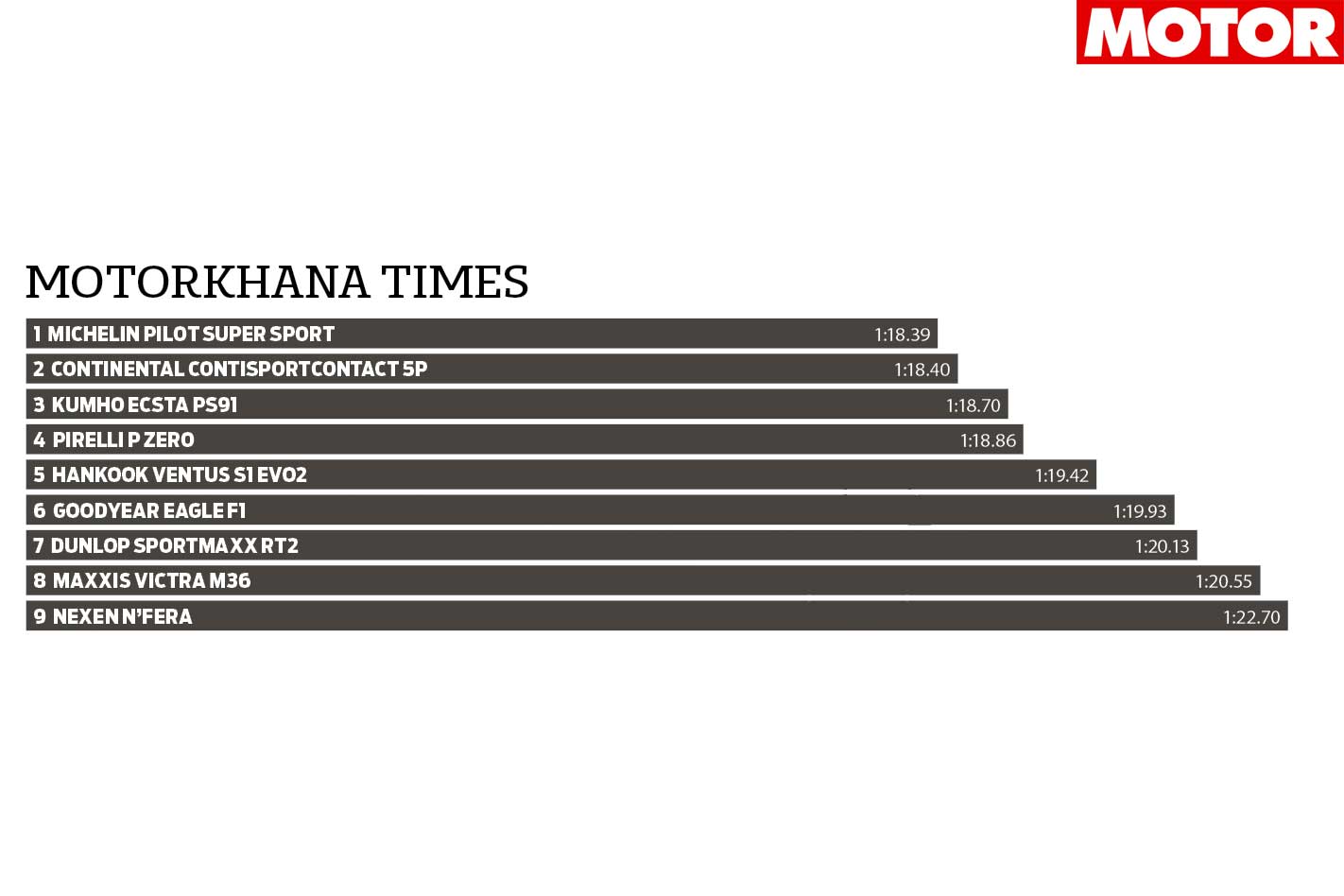
WET BRAKING
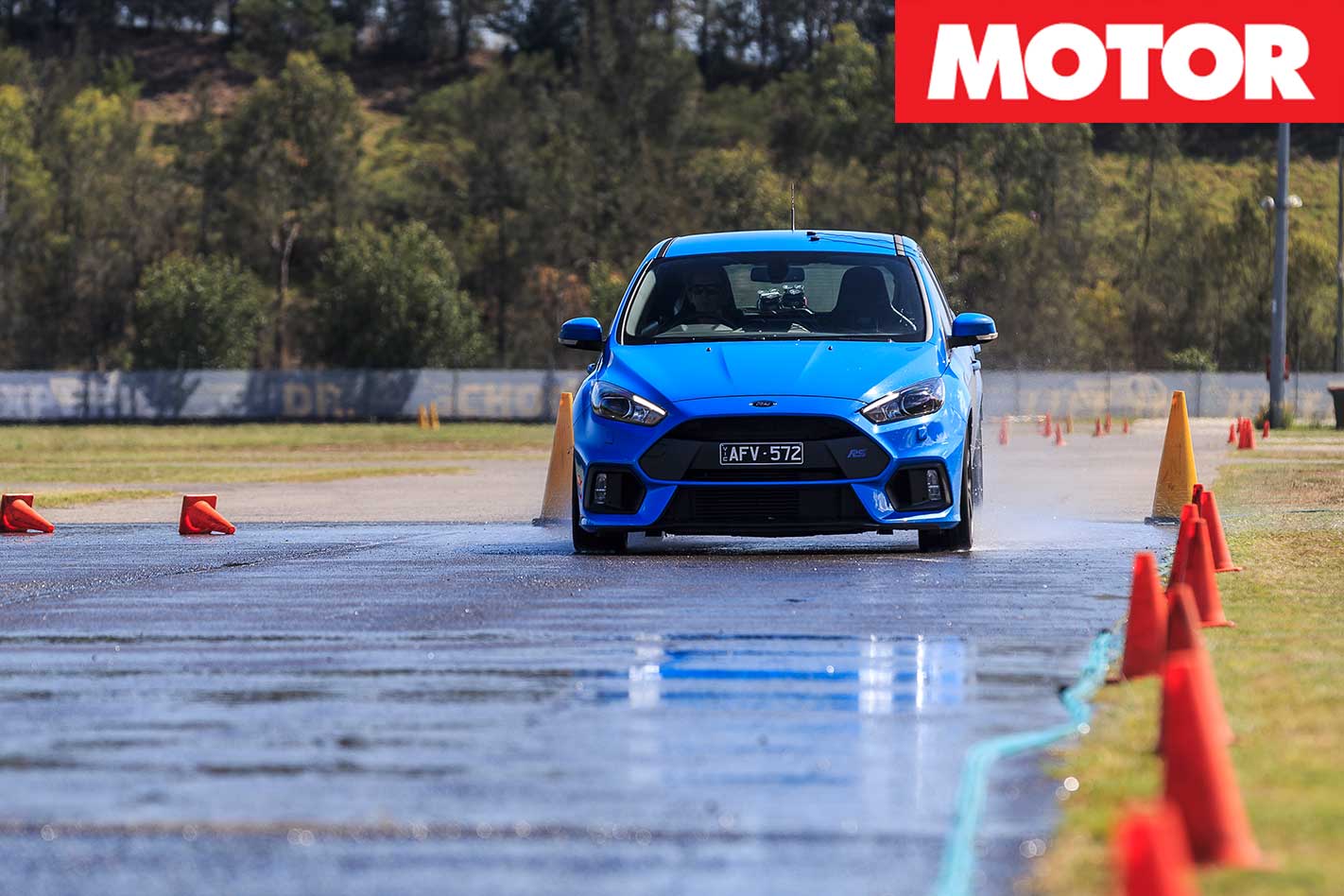
Modern tyres have to do it all, and the science of tread design is all about asymmetry – direction and left/right biased patterns are now the norm, with computer-aided design enabling tyre makers to massage and tweak the length, depth and even the edge chamfers of each block in order to meet the holy grail of handling, ride, noise and comfort.
The wet braking test is again measured in distance, with Wazza hitting a stretch of wetted-down tarmac at 70km/h aboard the Focus RS and throwing out the anchor.
An ingeniously simple method of circuit wetting – long strips of perforated garden hose – ensures that our surface is evenly damp from edge to edge, and again we’ll run the measure of passing our control tyre over the same set of track three times during the course of the day.
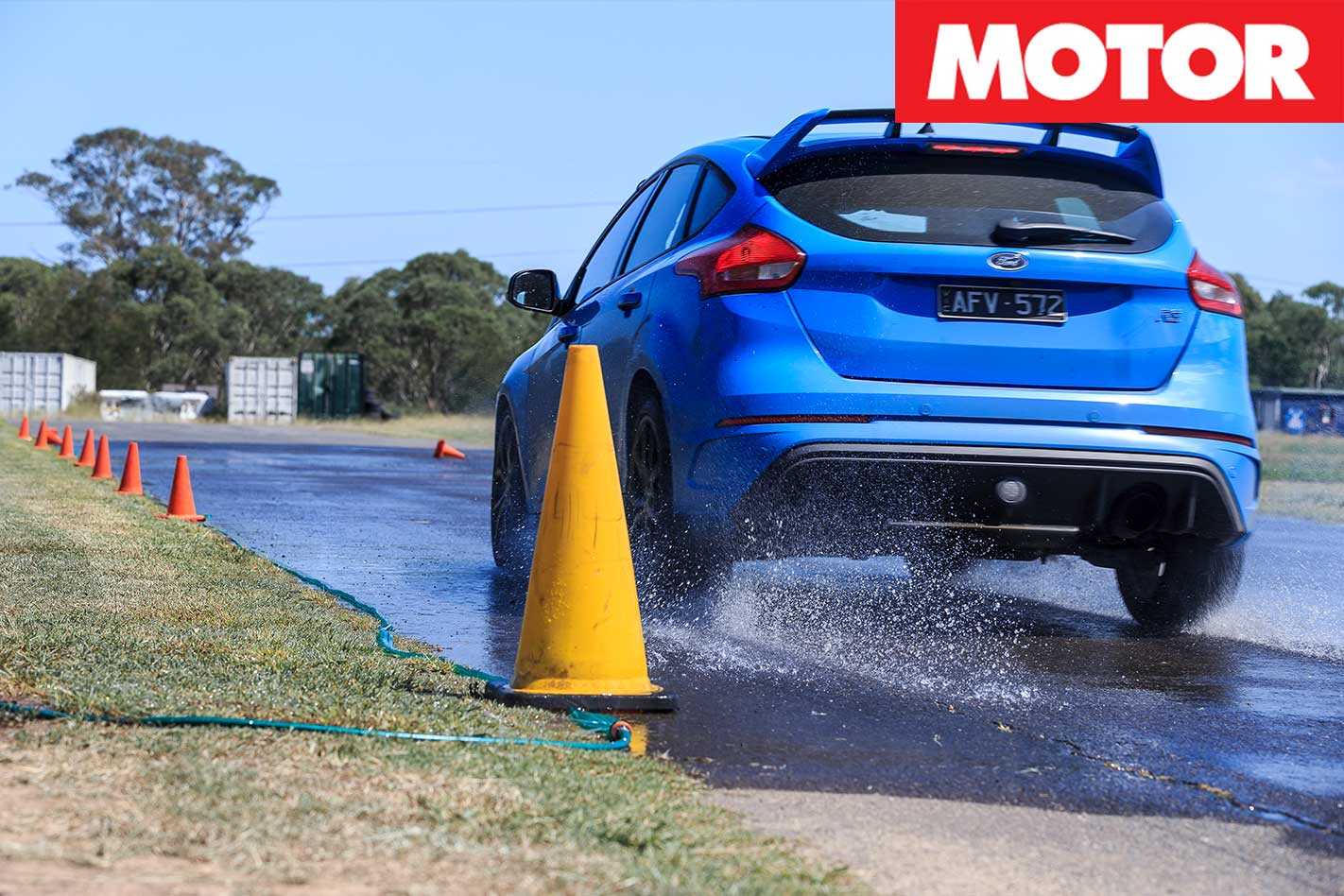
At a stopping distance of 13.96m, the Continental comes up trumps again, posting its second win of the day. The Ecsta again shocked the big players, with Kumho’s finest ending up 40cm further along the strip. Korean arch rival Hankook nails third a further 10cm past the Kumho, with Pirelli’s P Zero in fourth.
In a shock result, the previously dominant Michelin can only manage fifth, more than 70cm back from the Conti. The Eagle and the Sport Maxx end up in sixth and seventh, with the Maxxis and the Nexen eighth and ninth.
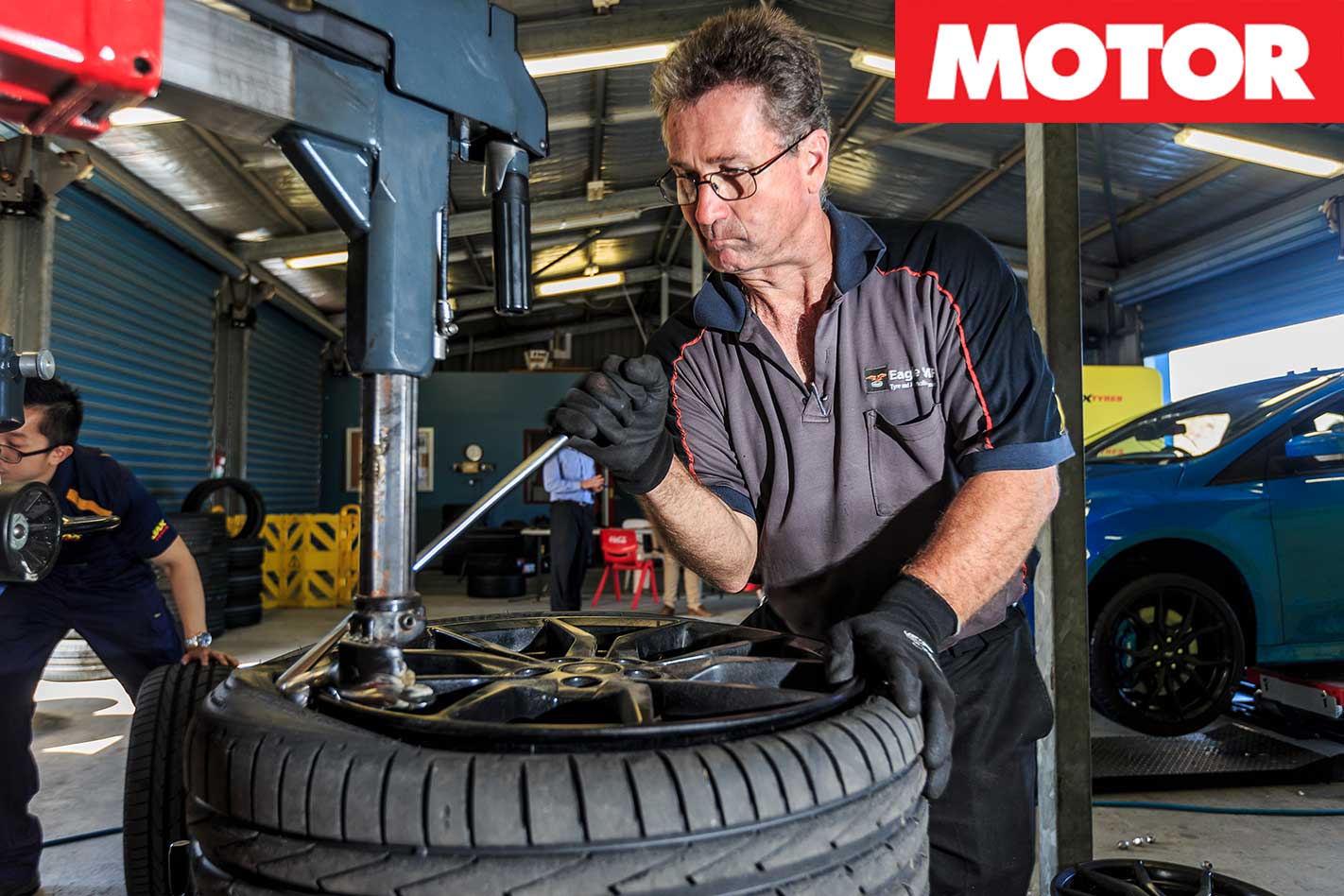
The Eagle F1 has surprised and disappointed this year, but its wet performance brought it back a little bit.”
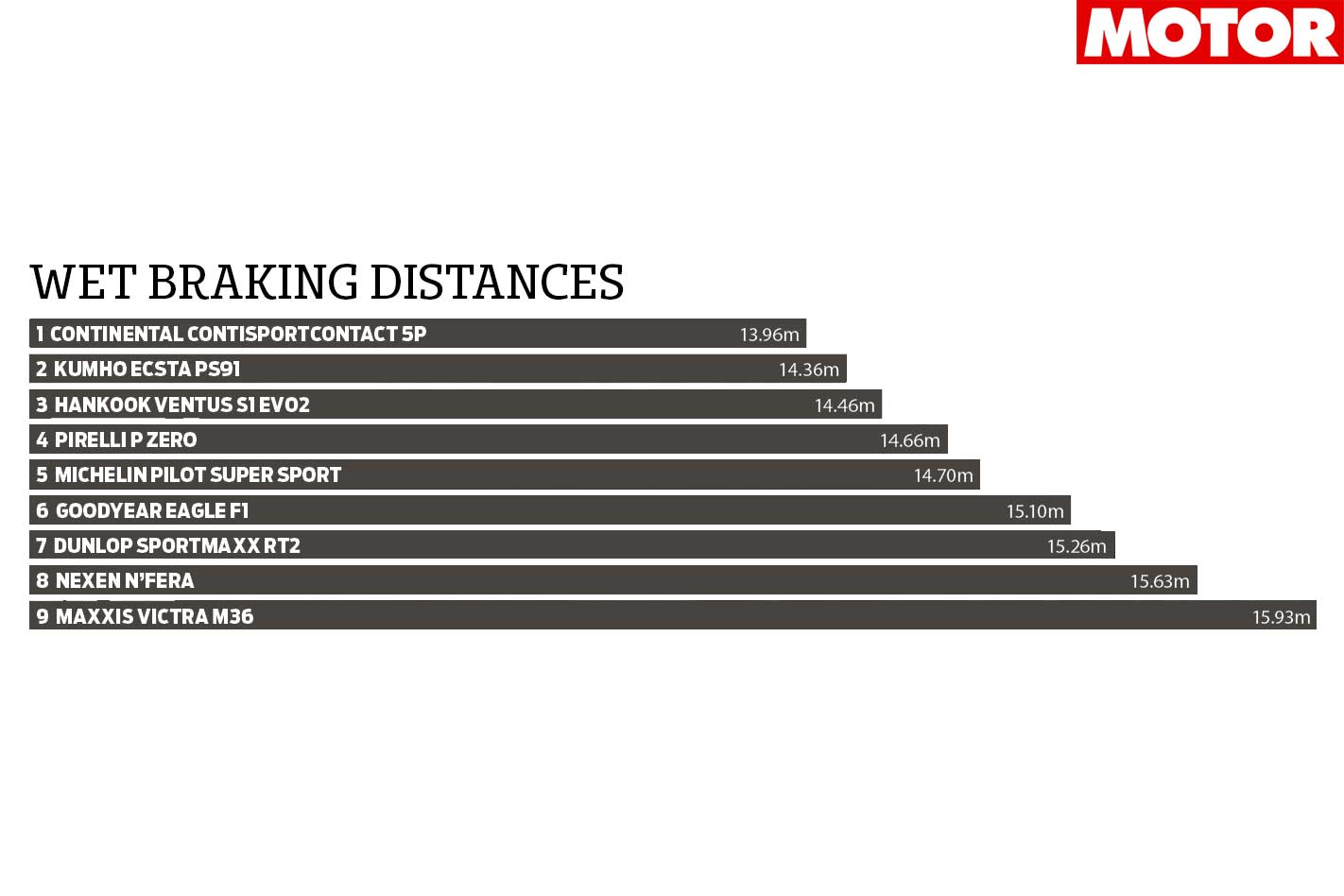
WET LATERAL G
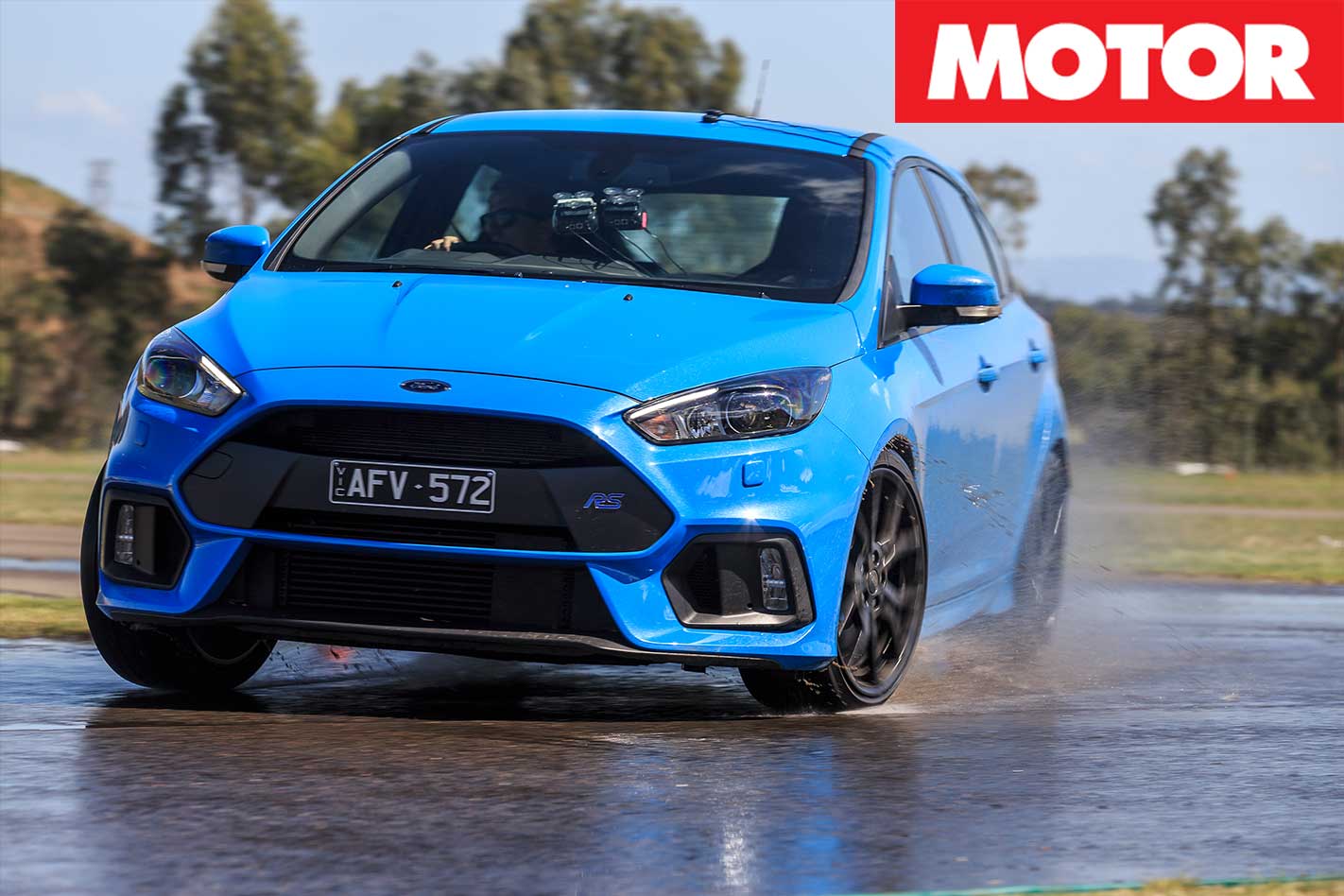
Wazza makes six runs at it – three turning to the left and three to the right – with each of the nine sets, using a 45km/h entry speed, before the top and bottom scores are cast out to remove any spikes or dud runs. The remaining four G readings are averaged, and voila, there’s the result, just like that.
Wet lateral-G testing is a new addition in our test playbook, and it reveals the loaded balance of each tyre set more convincingly than the front-axle bias of the wet braking test.
By mixing up the directions, too, Wazza can effectively negate any advantage or disadvantage a tyre may have by being on a loaded or unloaded side of the Focus RS.
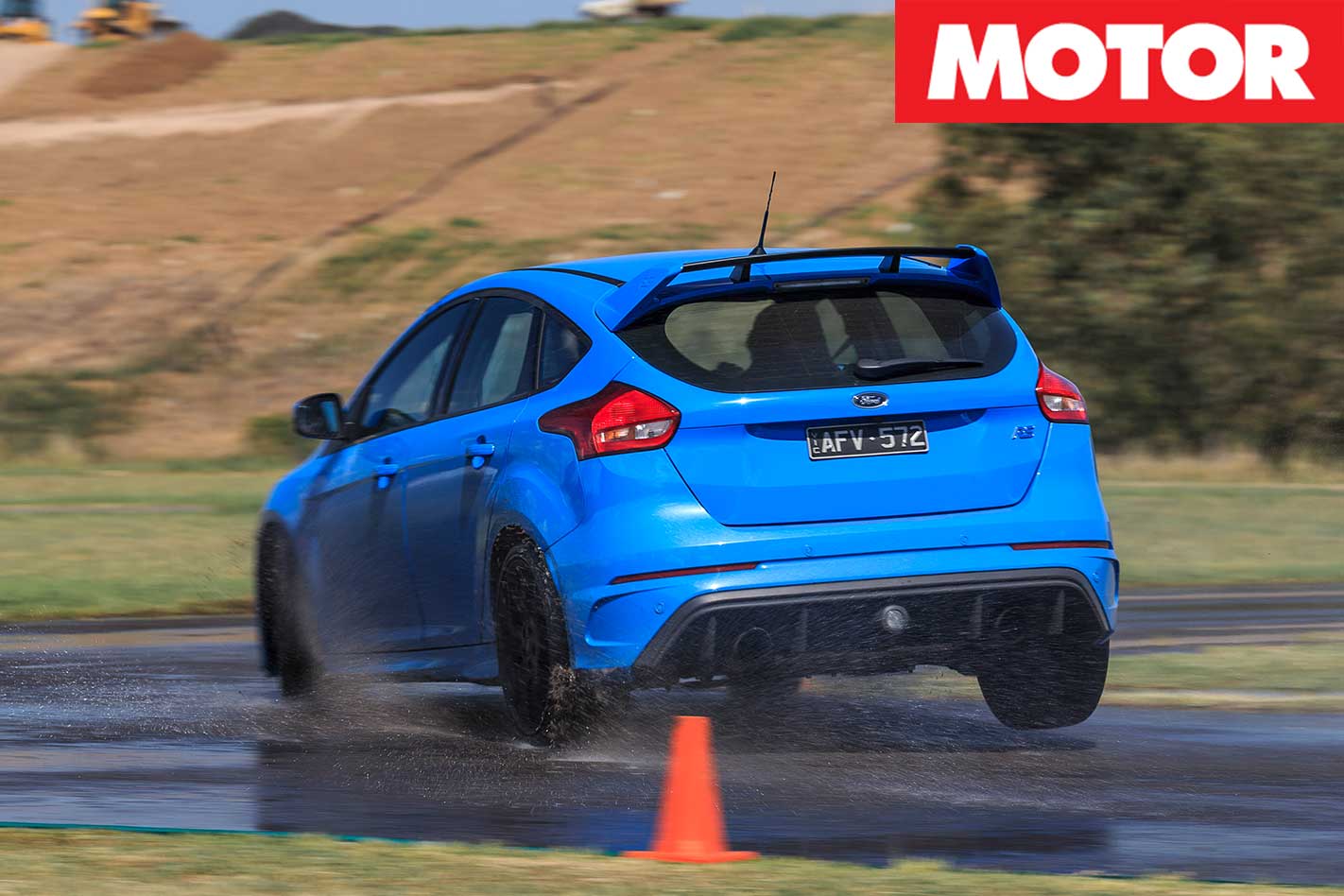
The Conti posts another podium place – this time a second – with a 1.04g score, and the Hankook again splashes itself up past more fancied and storied rollers to post a solid third spot with 1.03g.
The Sport Maxx RT2 finally rallies to score a fourth place – by far its best result of a surprisingly underwhelming defence of its 2016 Tyre Test title – while the Kumho just edges out the Michelin for positions five and six.
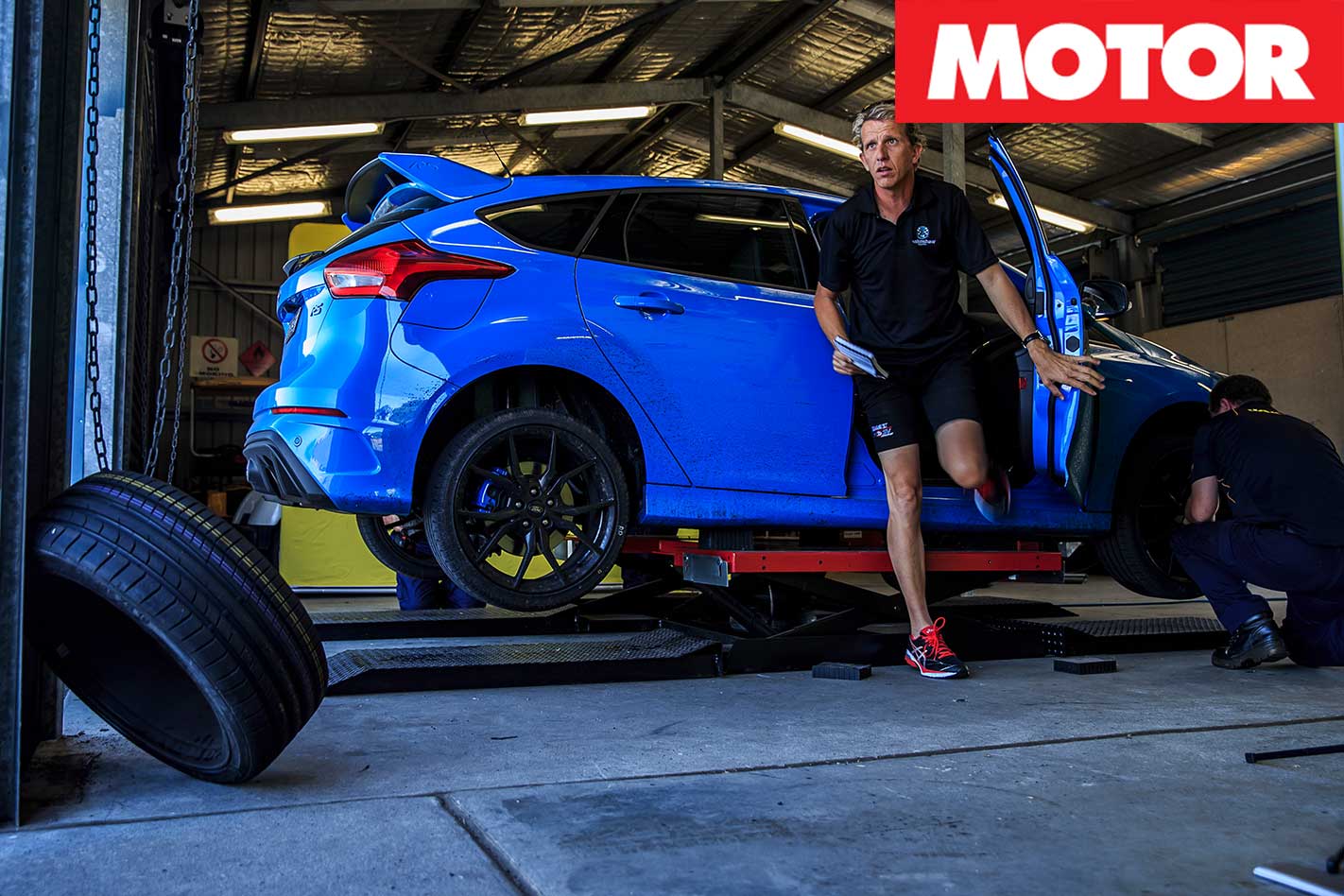
The Goodyear Eagle has significantly failed to soar today, finishing the 2017 test set with a lowly seventh spot, while the cheaper Nexen finishes above the Maxxis for eight and ninth places respectively.
“The Maxxis didn’t fare well overall, but its wet-weather performance was actually better than I imagined it might be,” Wazza said. “Same as the Hankook; it was also better in the wet than its dry performances indicated it might have been.”
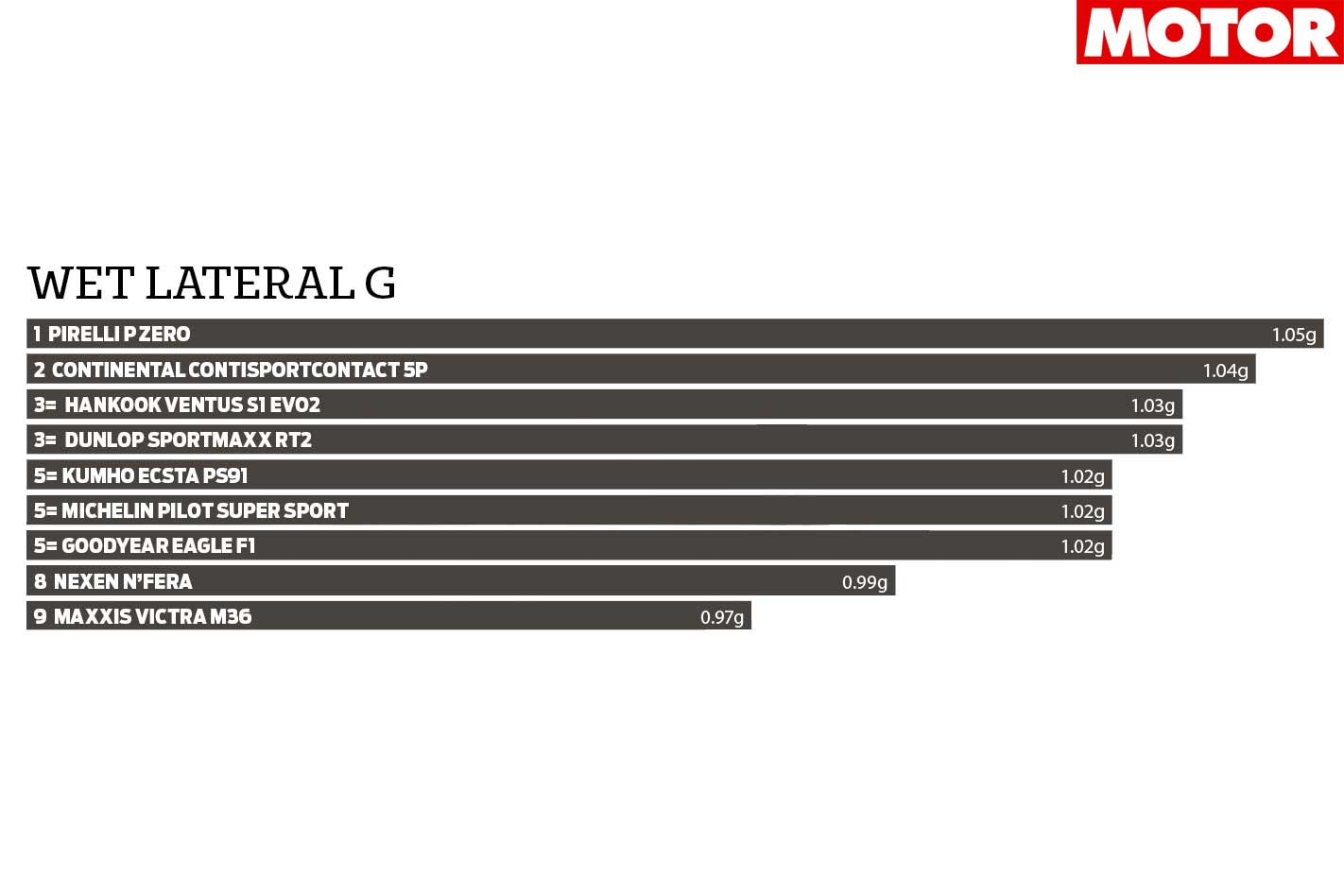
OVERALL WINNER
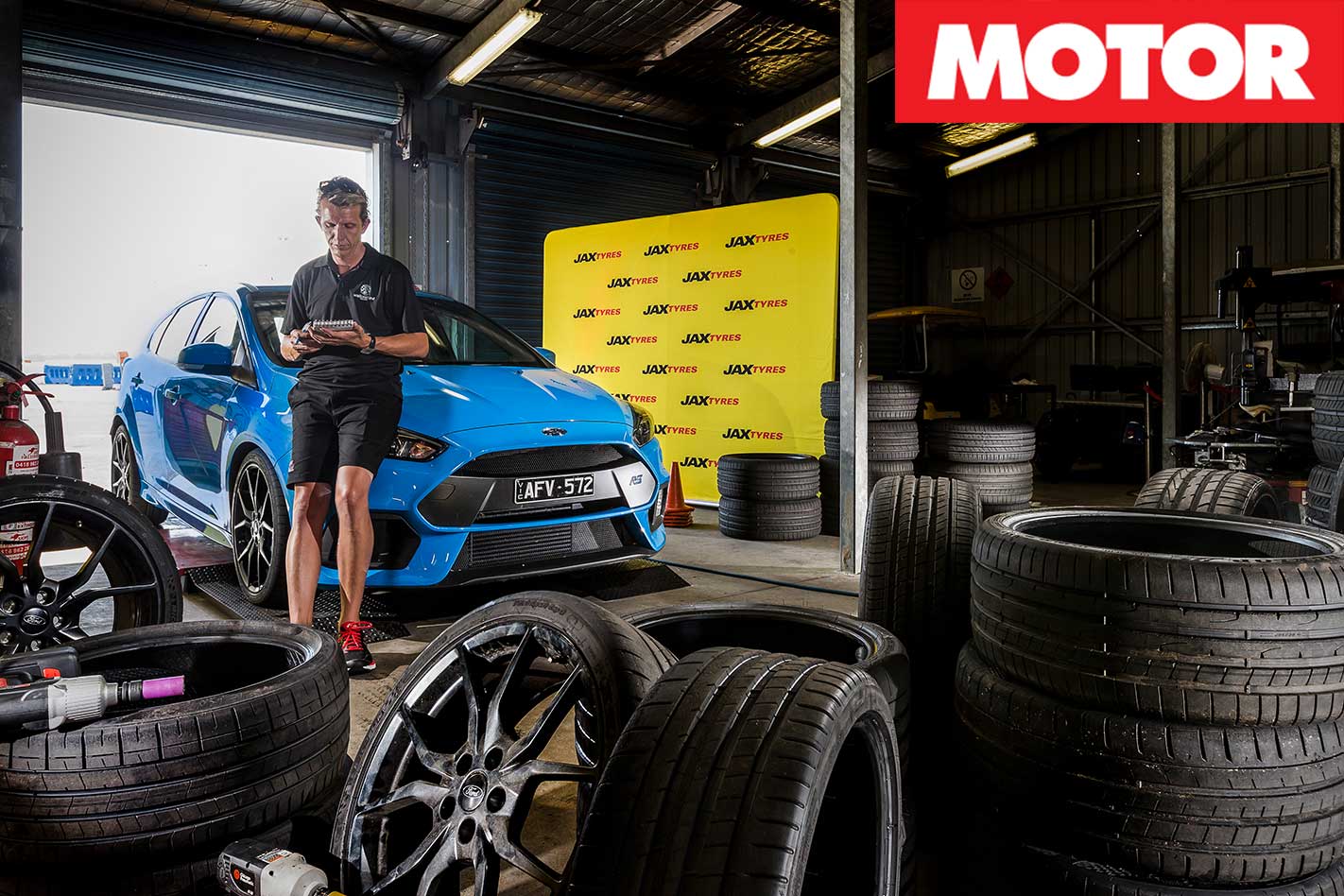
Unless someone out there has access to a very large, climate-controlled shed that’s equipped to run a level-five autonomous car at top speed, it’s worth reminding that this is a real world test – and we control or at least factor-in the variables as tightly as we can – but that means there will always be minute vagaries in testing procedures.
However, this year’s testing – the result of fine-tuning the methodology behind the event, as well as the consistency of the team who have been together for some time now – really is as objective as it can be.
And there is little doubt about the winner. The Continental ContiSportContact 5P nailed three silvers and two golds to claim 2017 Tyre Test honours.
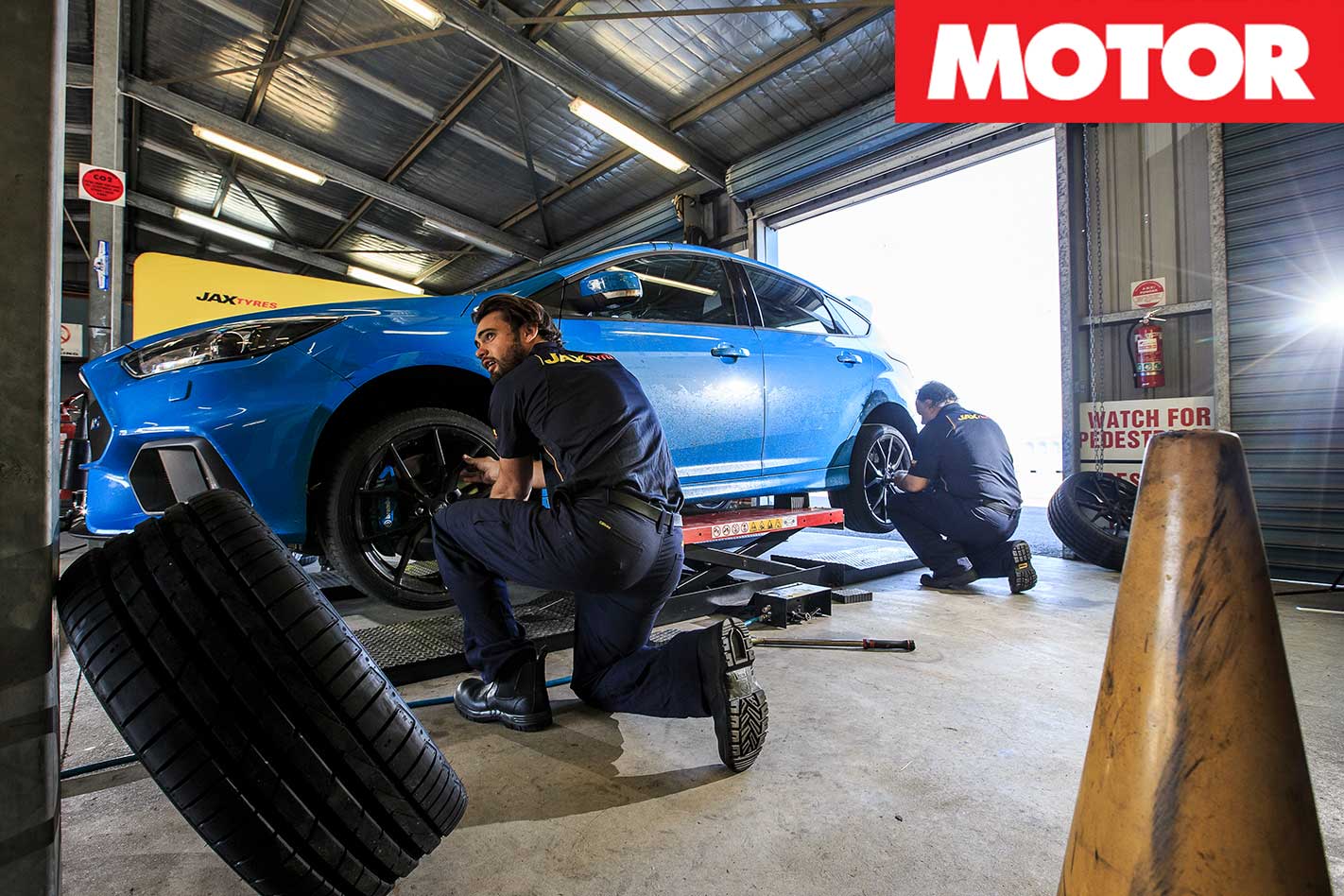
Interestingly, the Michelin Super Sport and Pirelli P Zero were separated by a single point. Even with the distinct difference in scores between the dry and wet test set, the two tyres finished with a small difference.
The Pirelli couldn’t quite match the Michelin’s performance in the dry tests, but a low score in the wet tests from the French tyre meant it couldn’t capitilise on its dry-weather prowess.
Kumho climbed to the top of the Asian-sourced heap in fourth over the Hankook, while the defending champ Dunlop fell to sixth. The Goodyear Eagle finished seventh, the Maxxis and Nexen equal eighth.
Ultimately, the king is dead. Long live the new king: the ContiSportContact 5P.
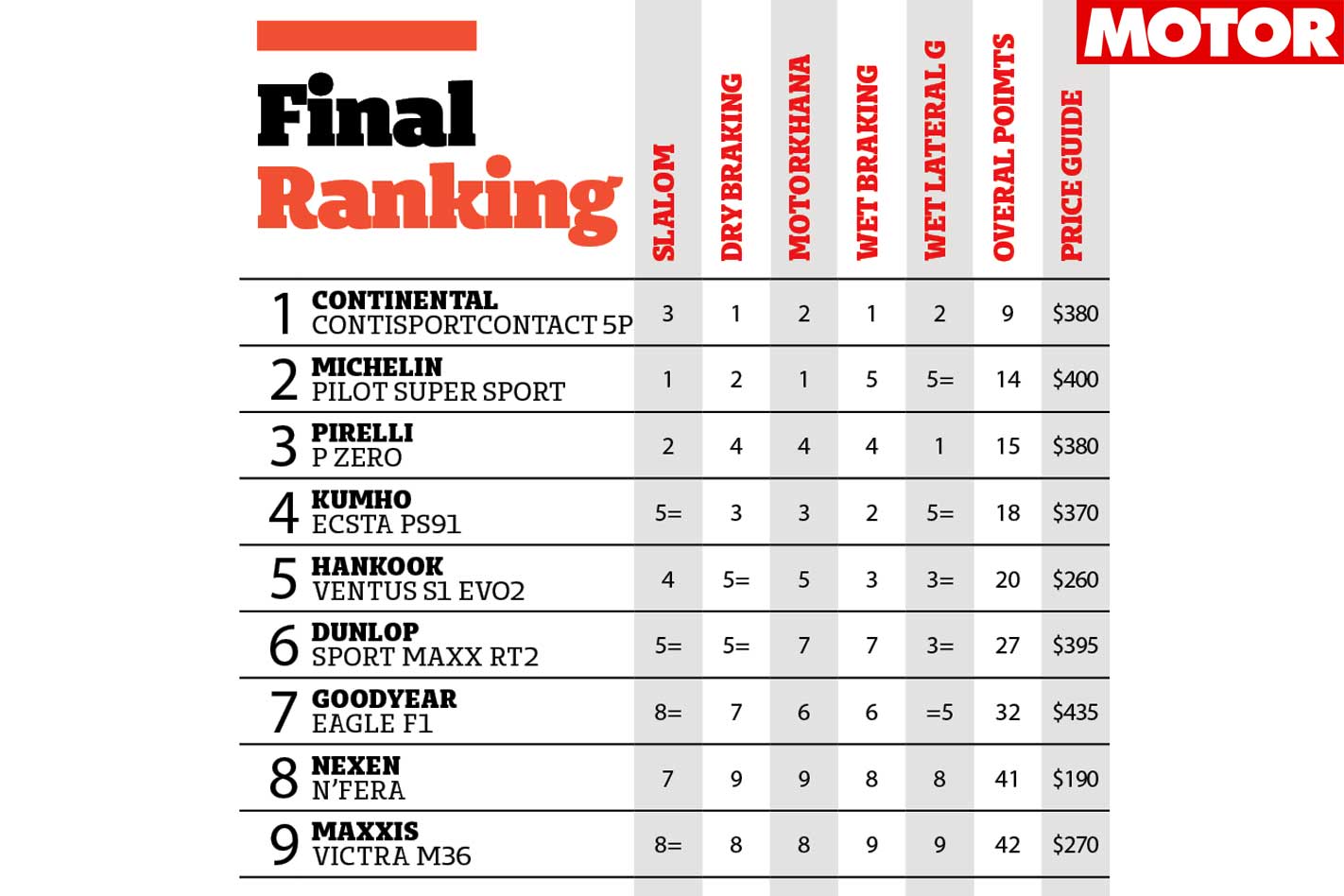
WHY WARREN LUFF IS OUR TESTER
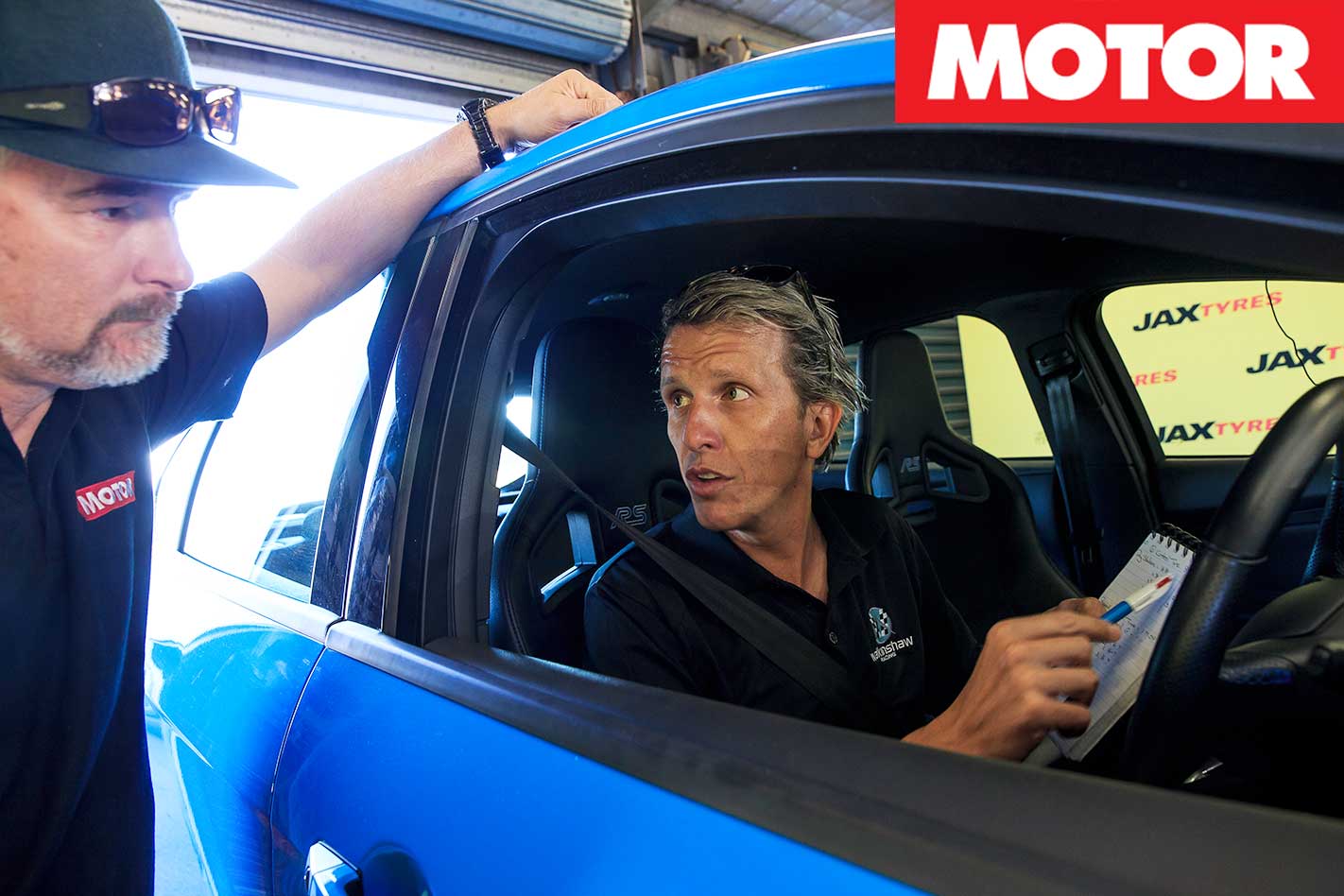
A long time, card-carrying member of the MOTOR test crew, his ability to repeat tests time and again with the same inputs is almost spooky to watch. He can also fly our data equipment like a pro and always mucks in at the end to get things squared away. His ability to turn a half opportunity into a potential cover shot is pretty impressive as well.
Follow Warren Luff on Facebook, Twitter (@wazzaluff) and/or Instagram (@luffy76).
THANKS, JAX TYRES
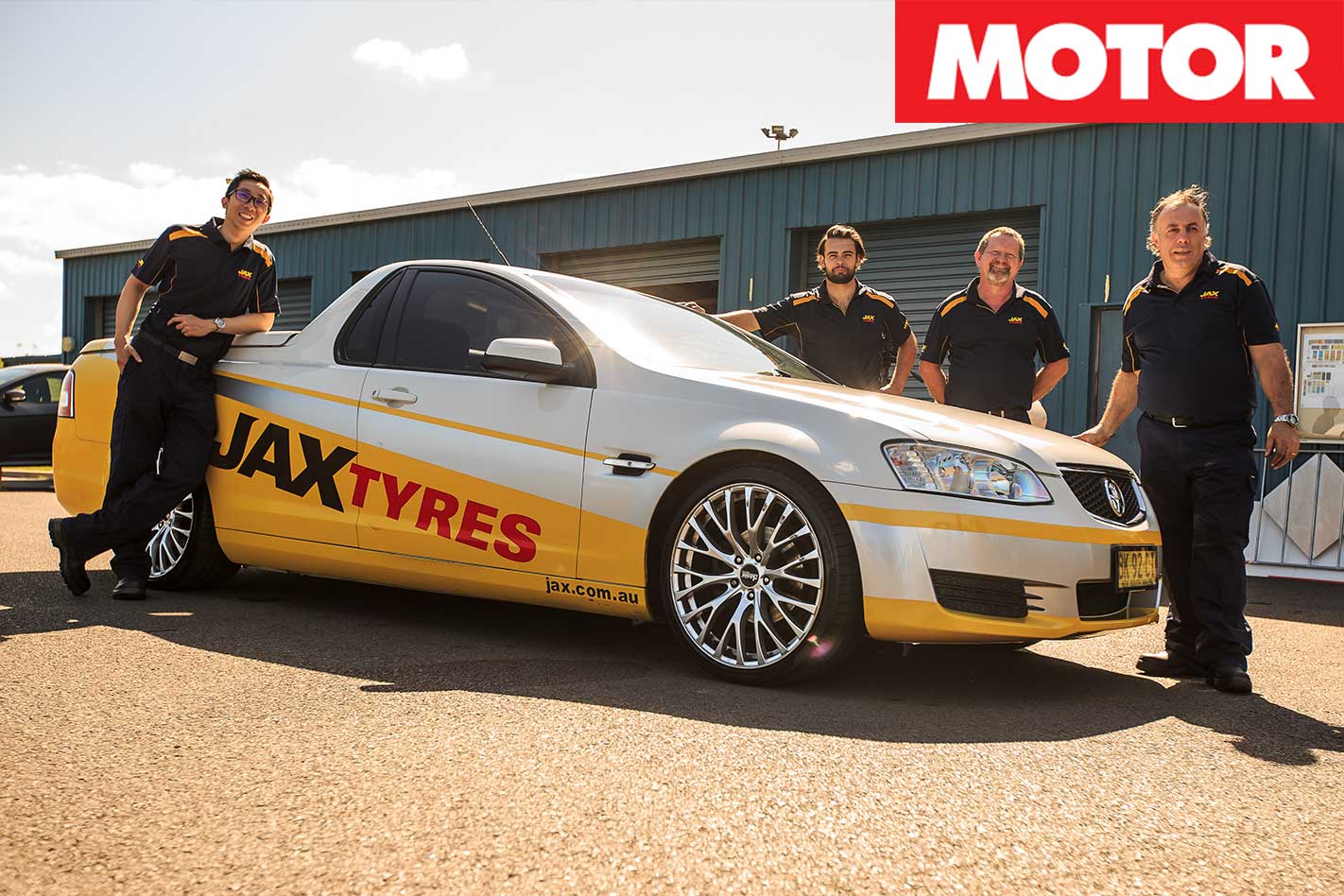
The crew at JAX Tyres have helped us out on a few of these now, and their experience counted when one set went M.I.A at the eleventh hour.
Not ideal indeed. Not only did the lads procure and ship all of our tyres, they also fitted nine sets to our spare sets of Focus rims and had them ready to roll so Luffy could drive straight onto a chassis lifter, get new rubber, check the hair and be back out flogging them senseless in minutes.
Thanks, too, to Eagle SMF, who supplied two tyre-fitting machines that made short work of processing the tyre fits in plenty of time. So Nicholas, Jackson, Chris, Frank and Kerry… seriously, good on you, fellas!

